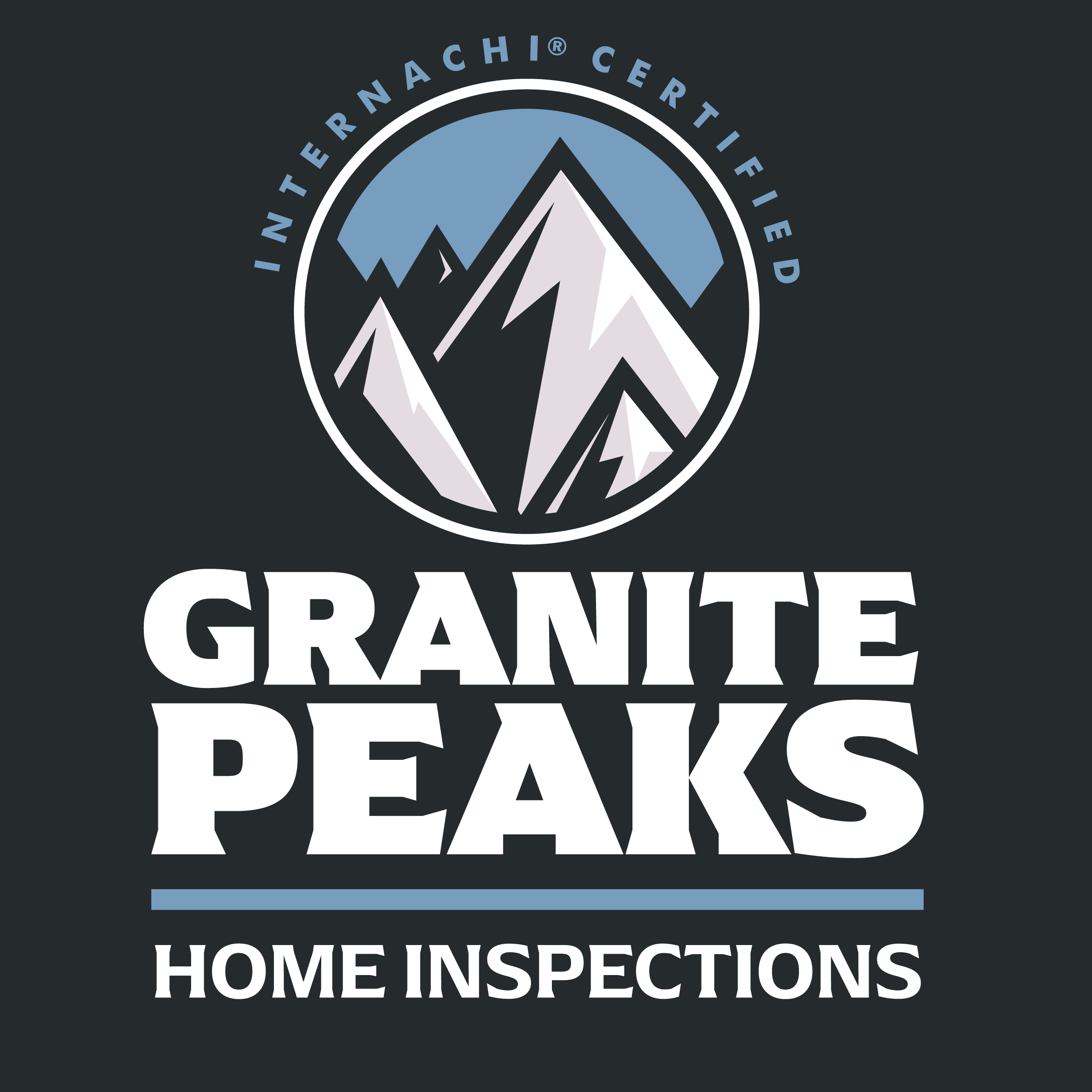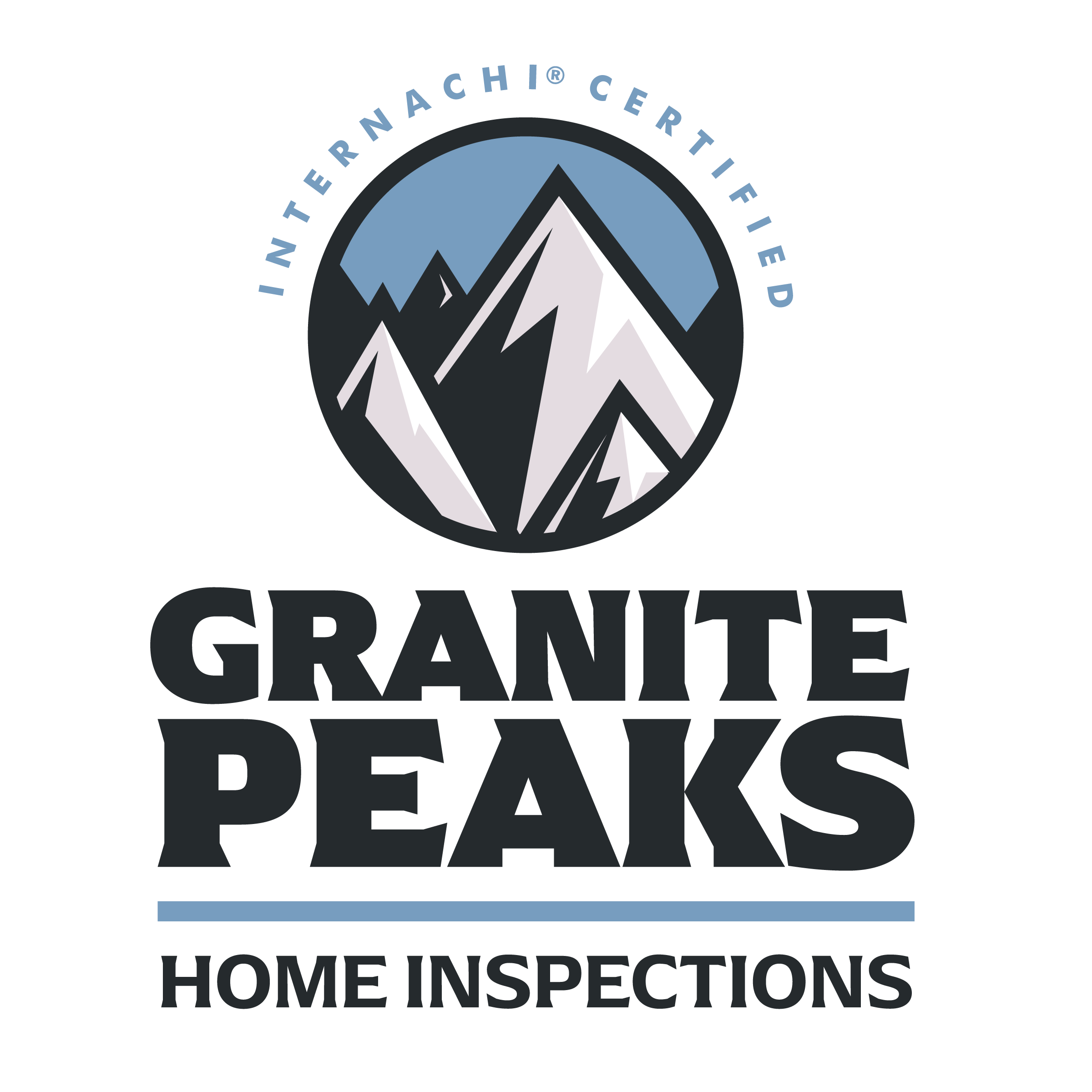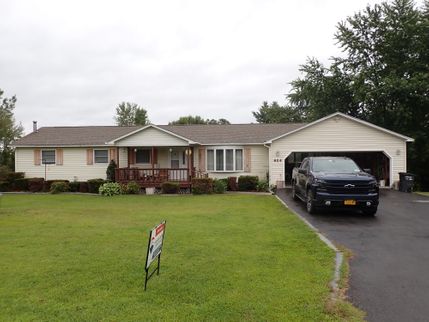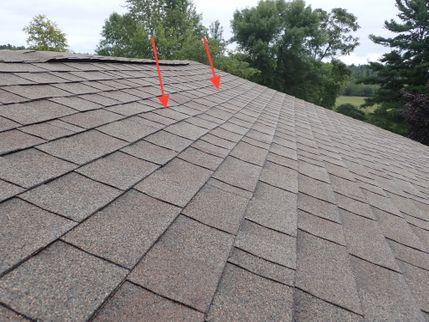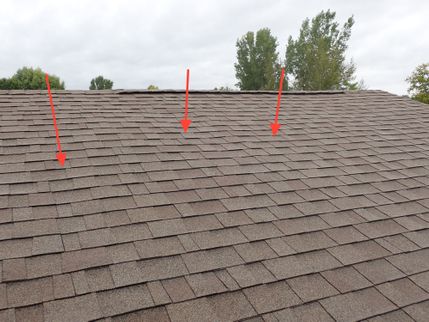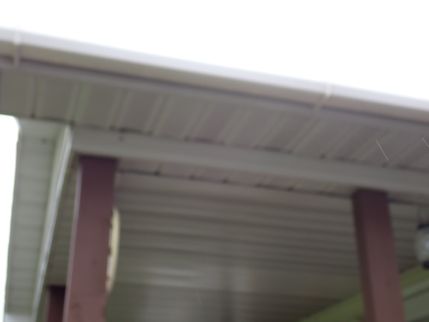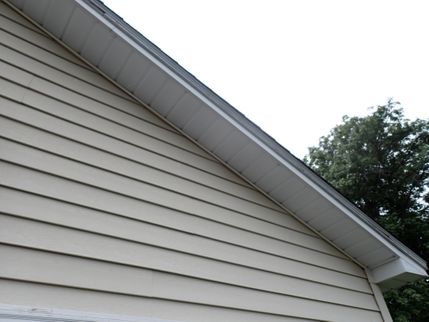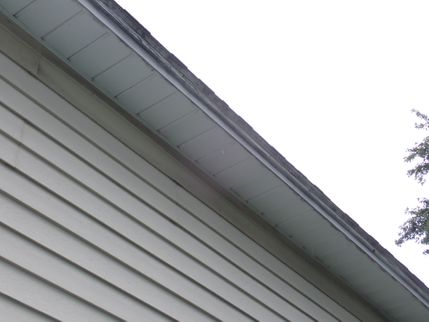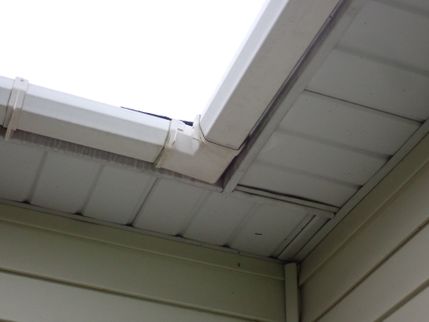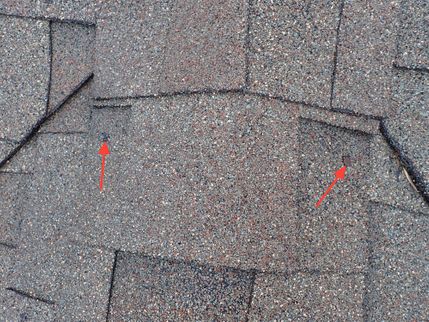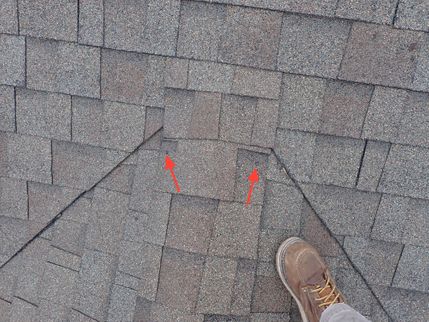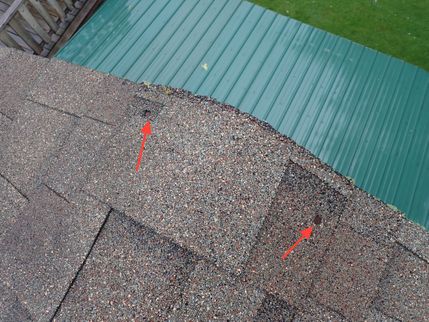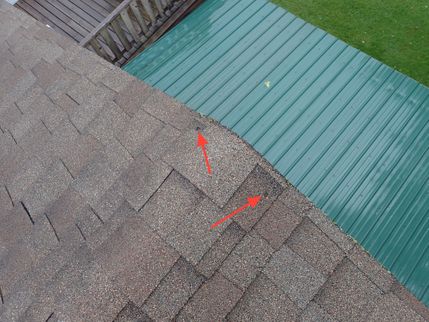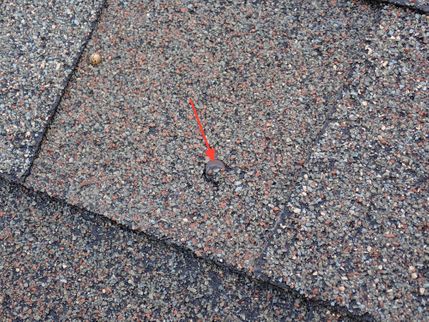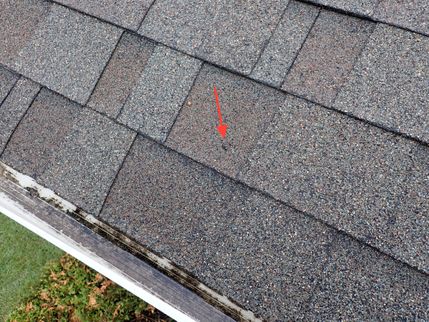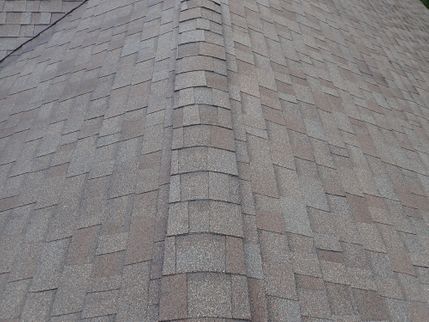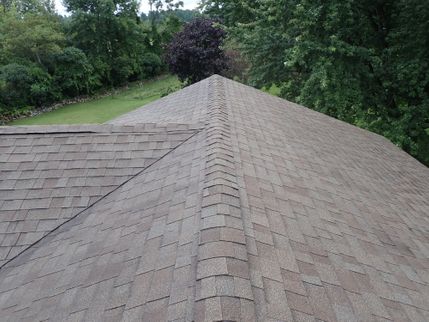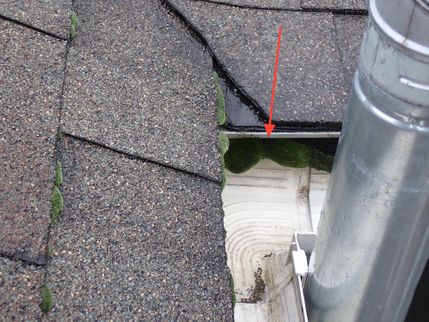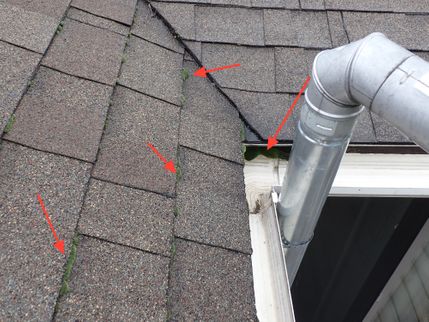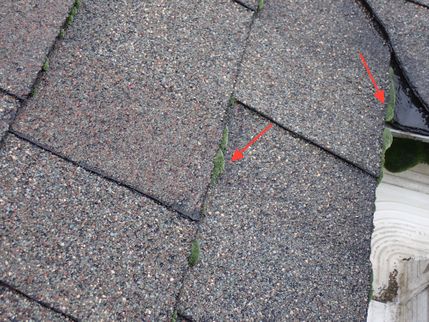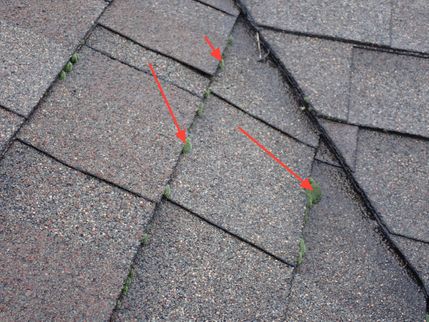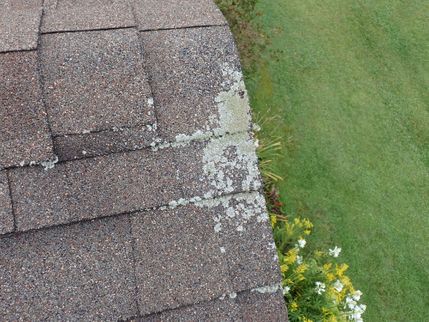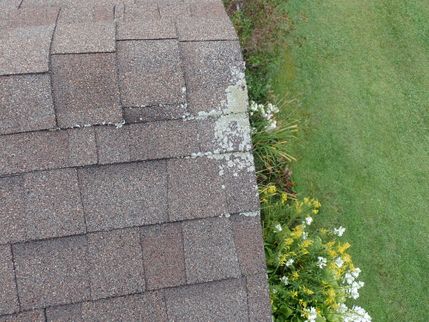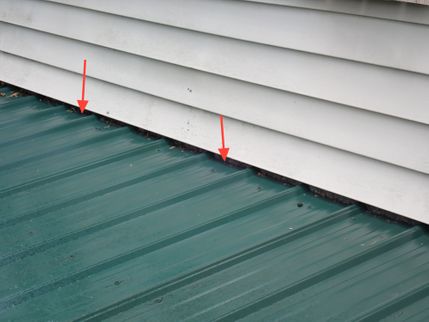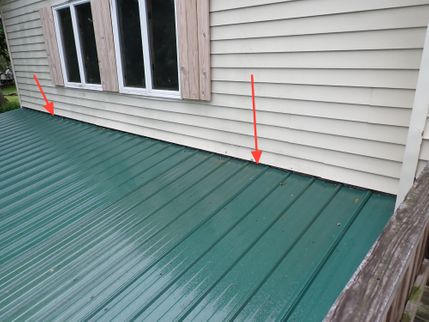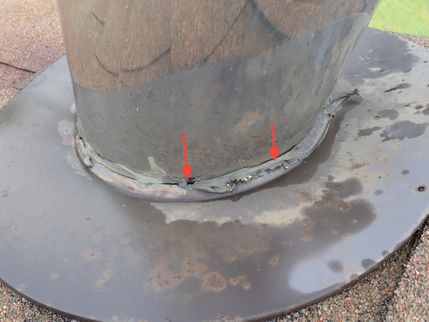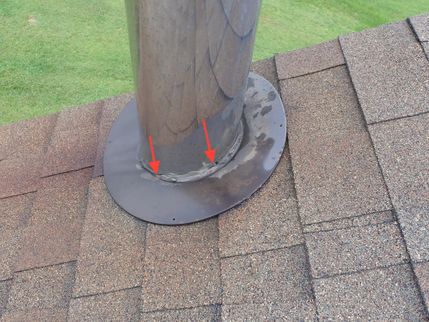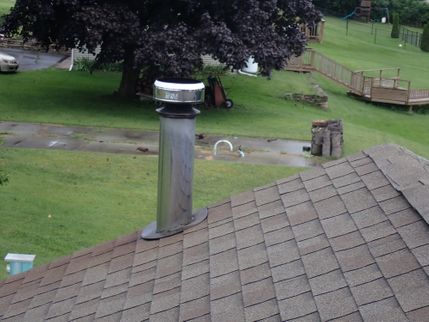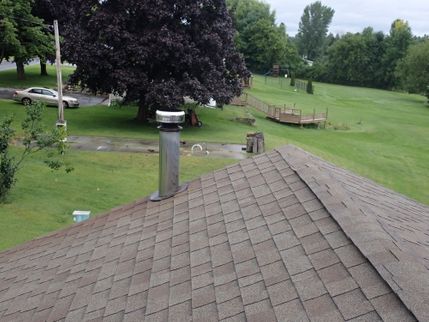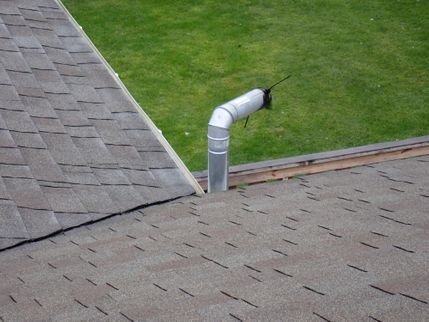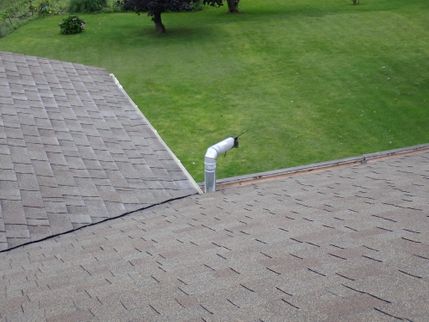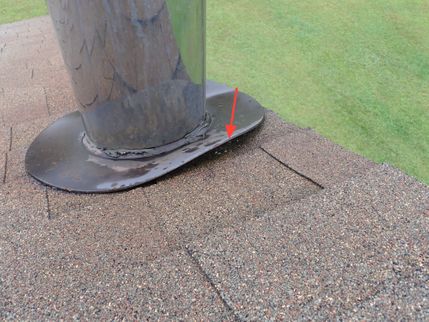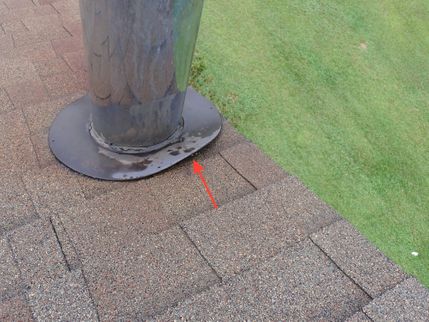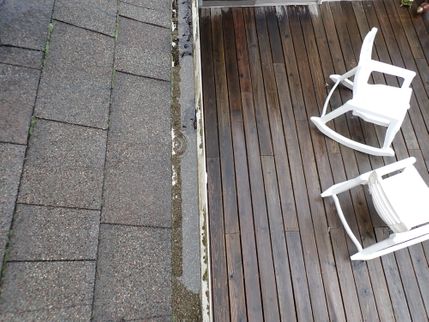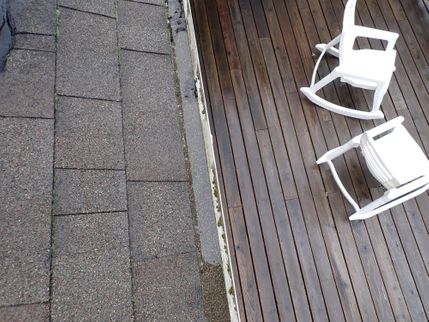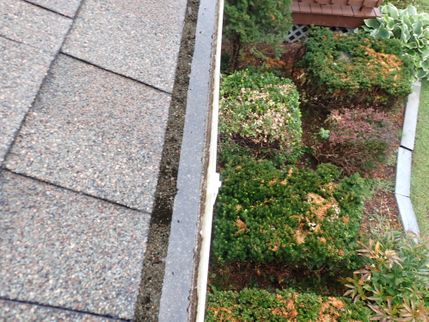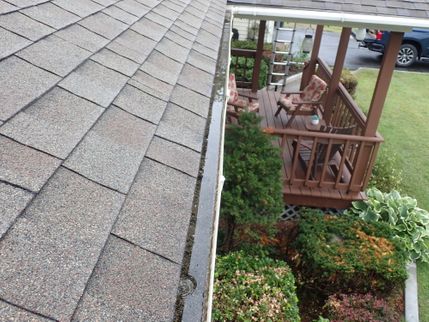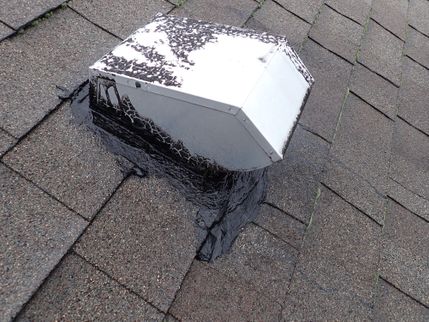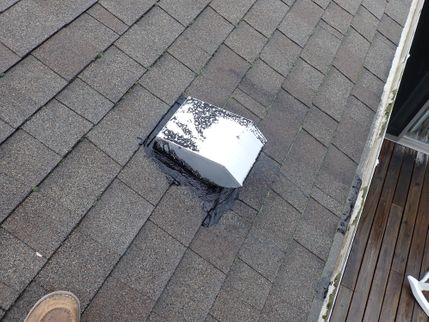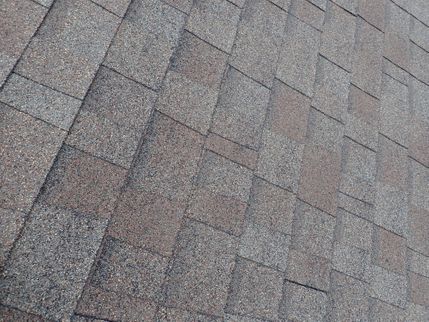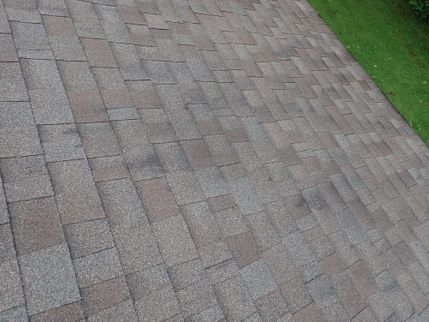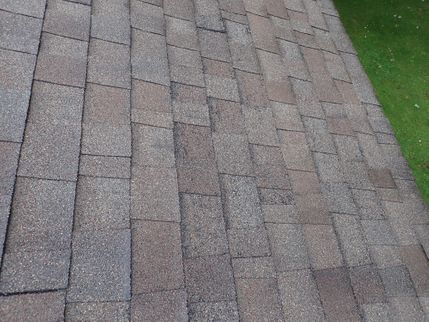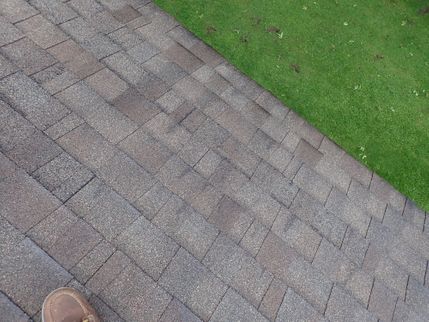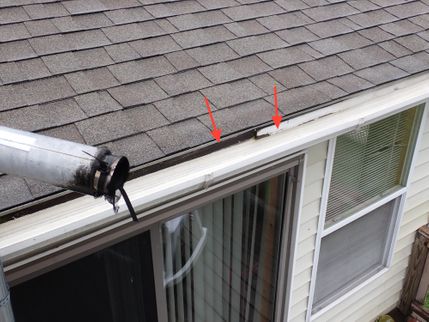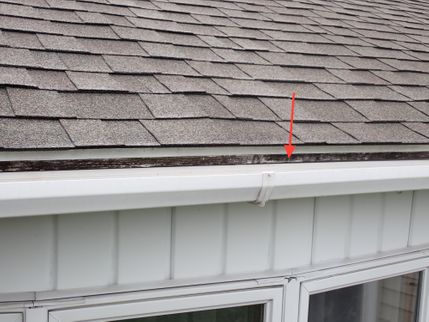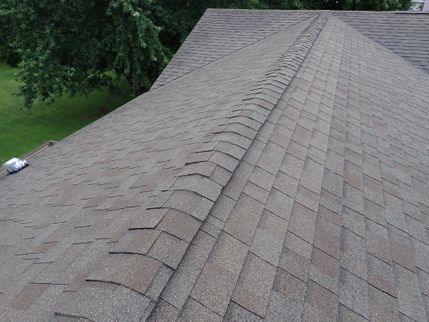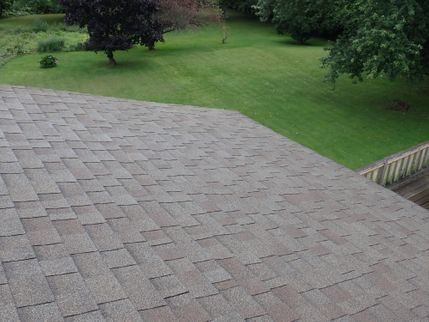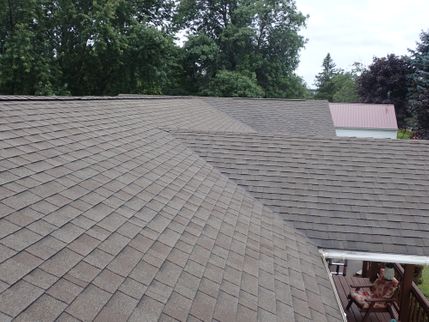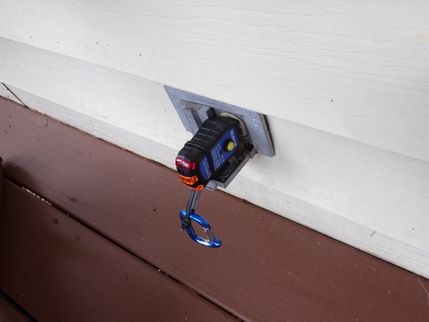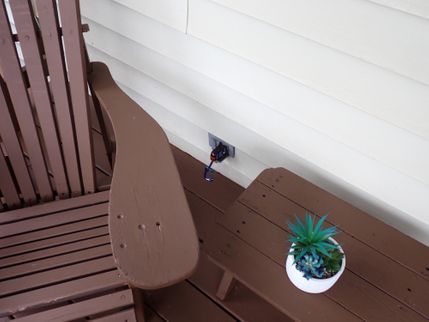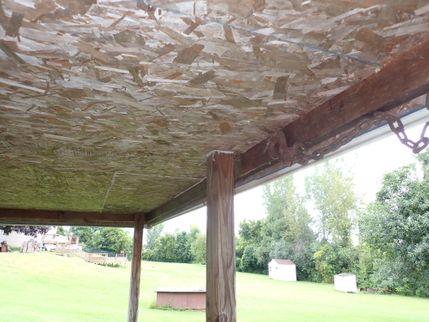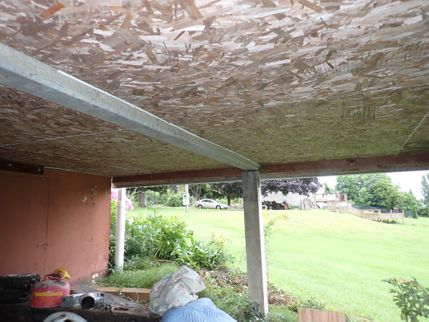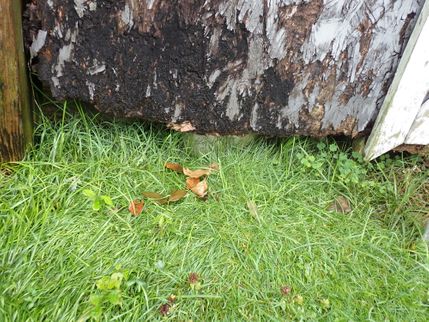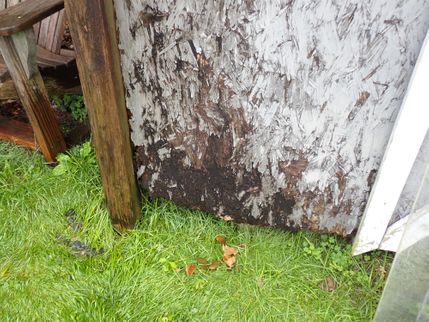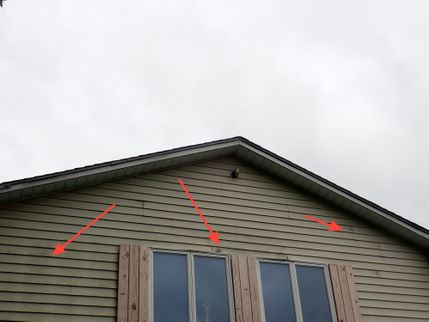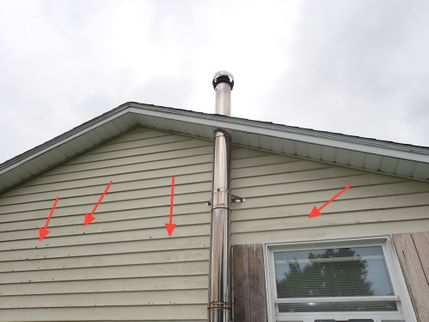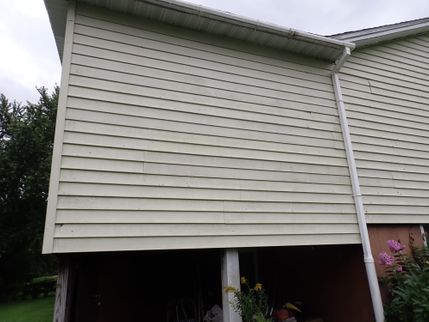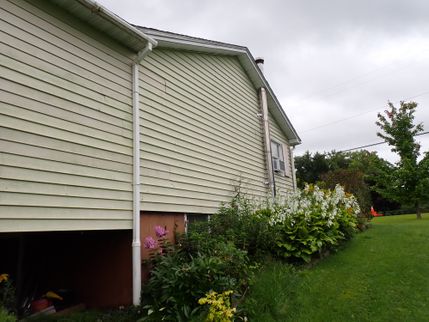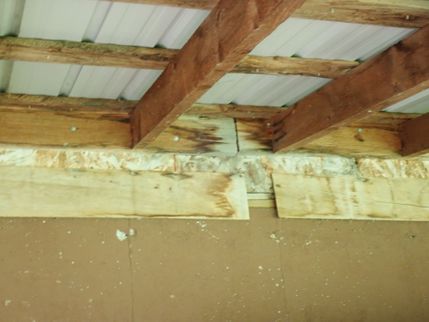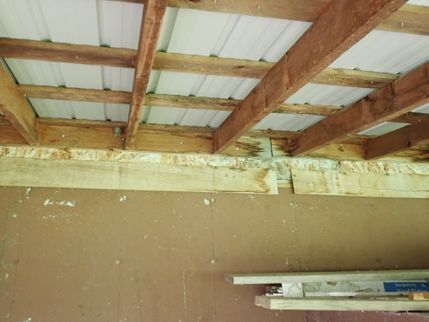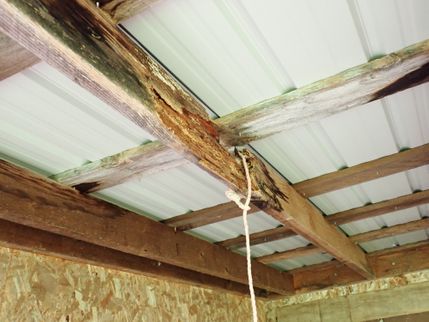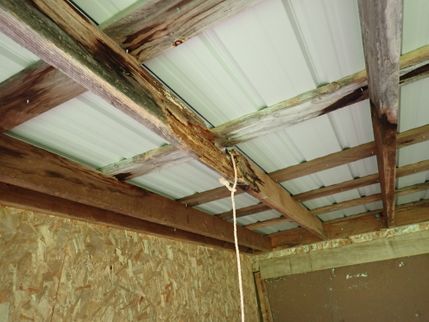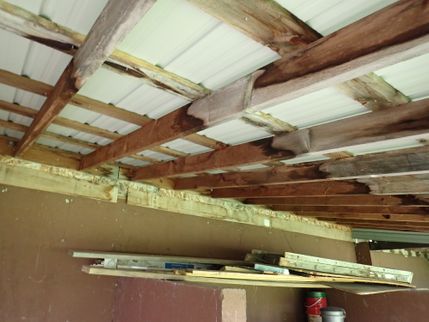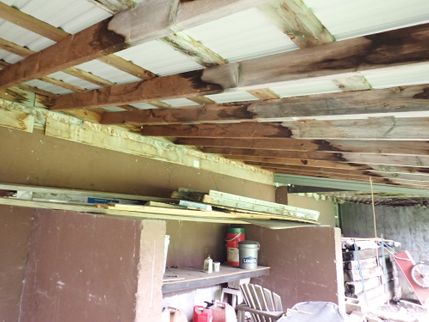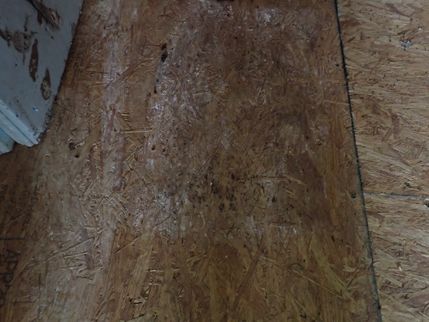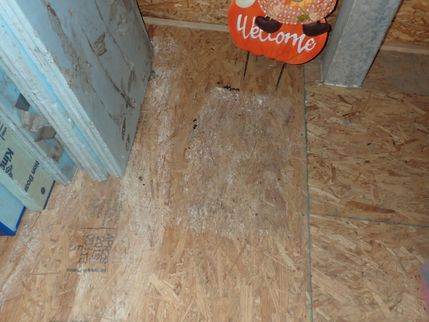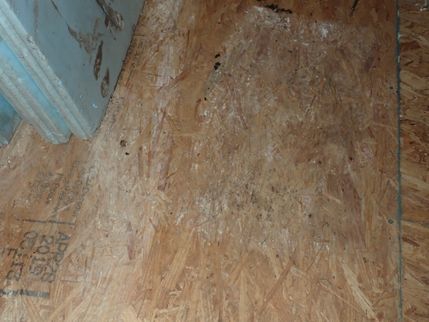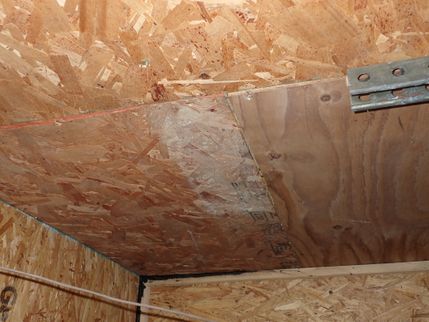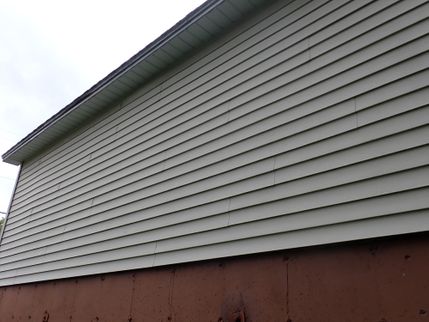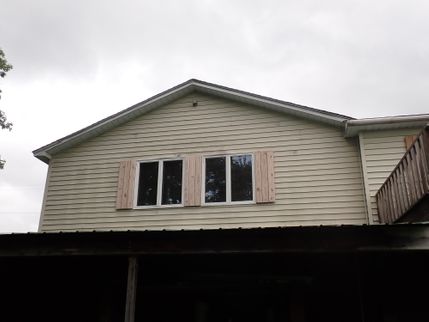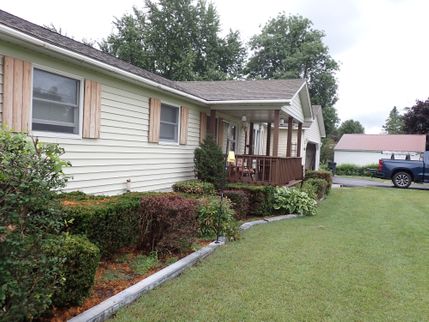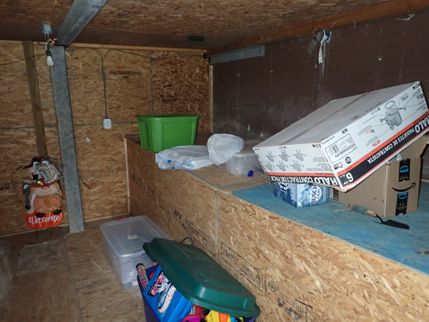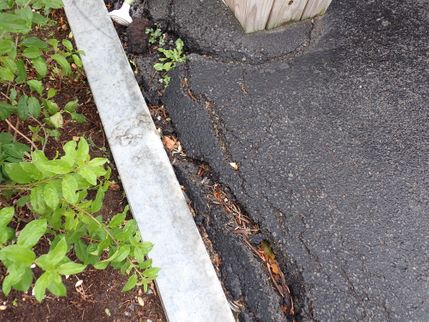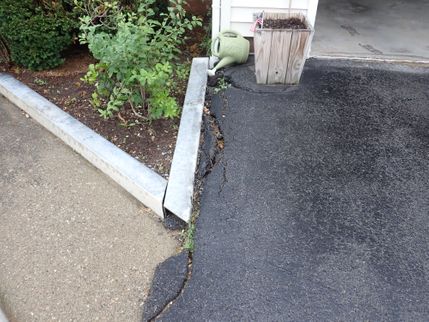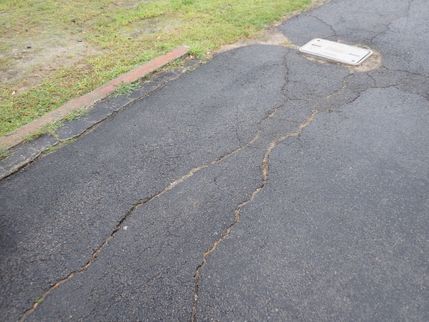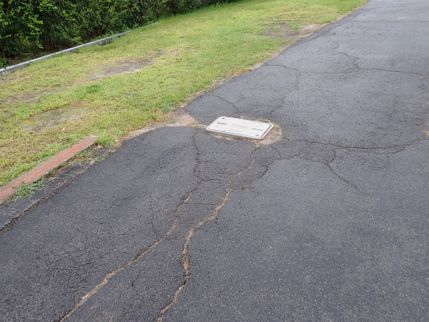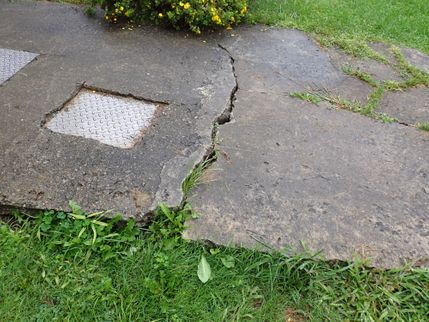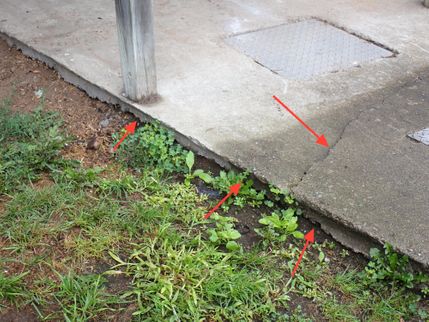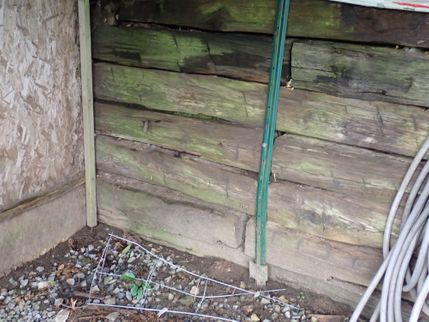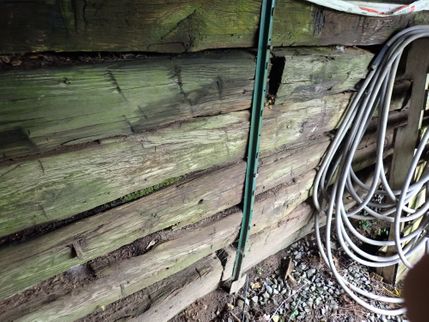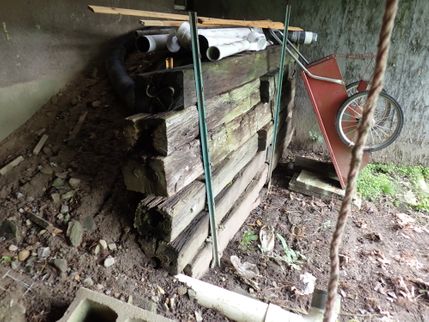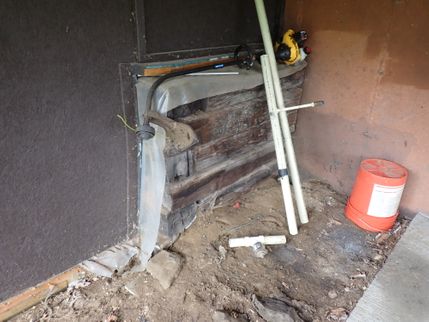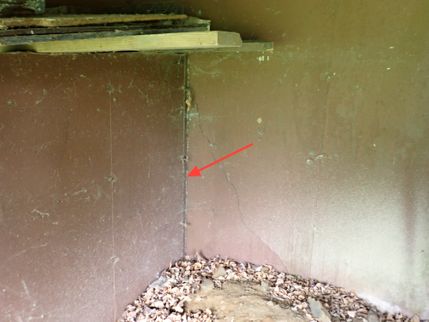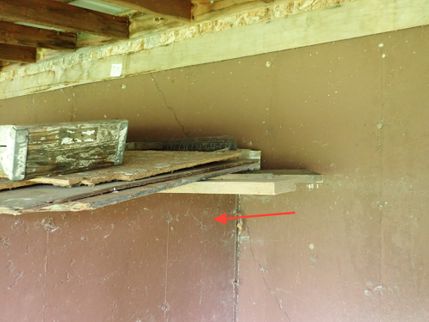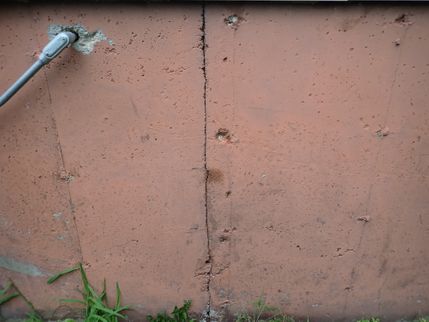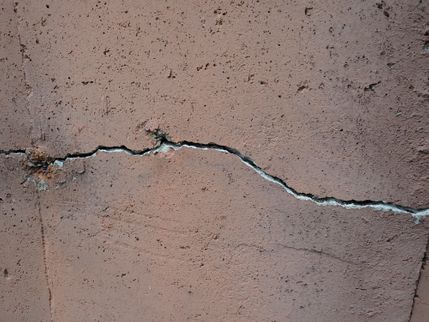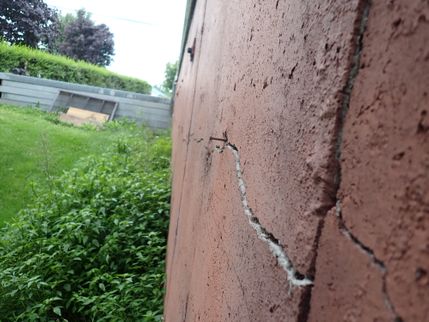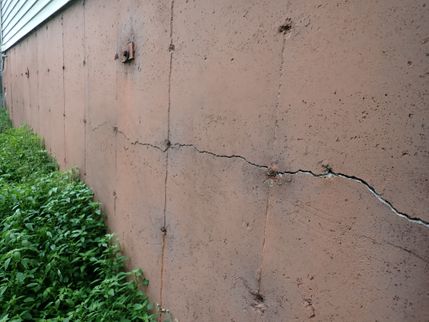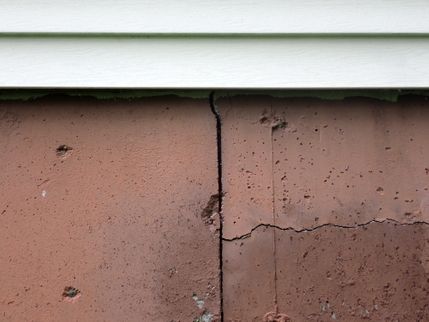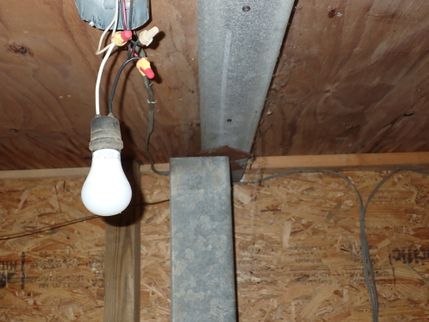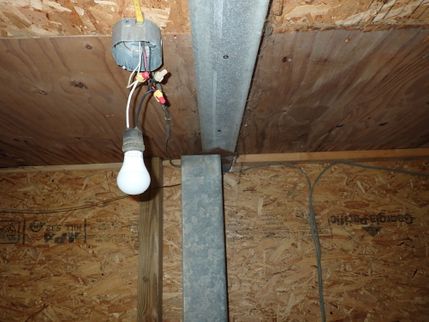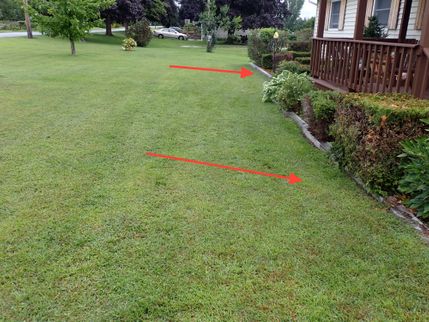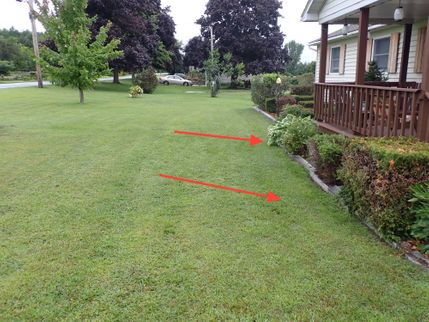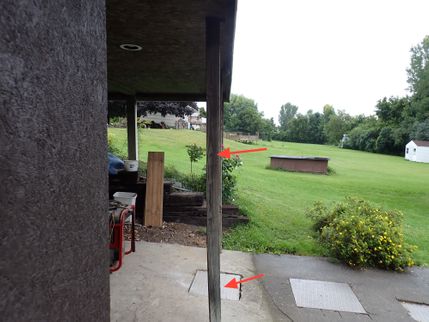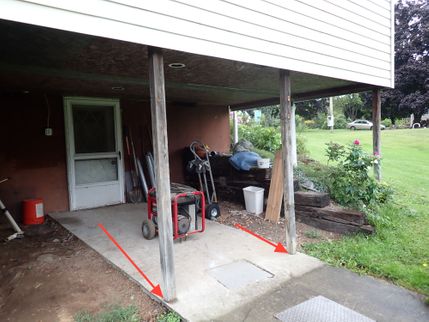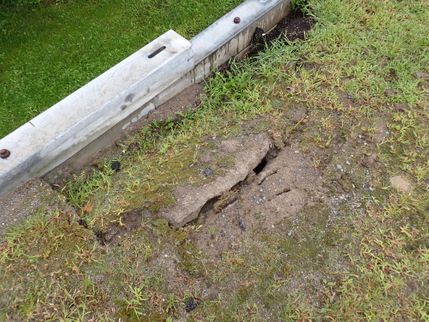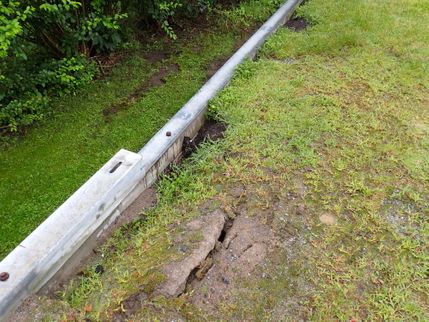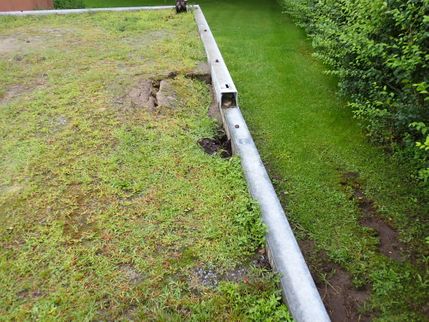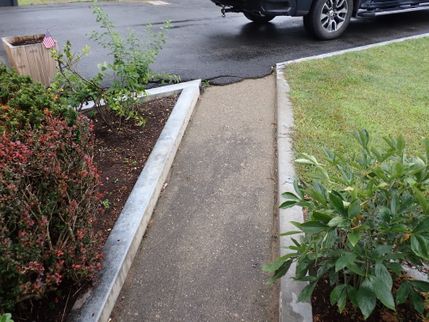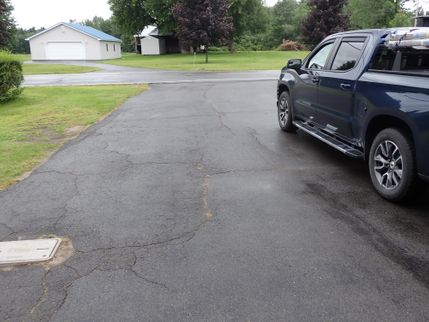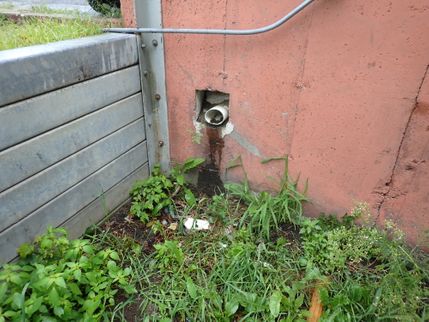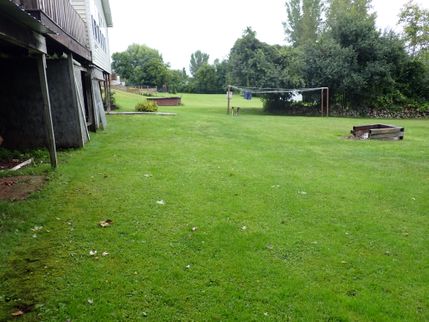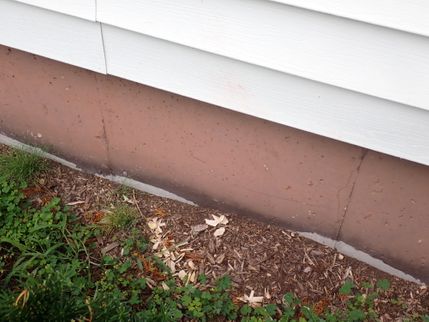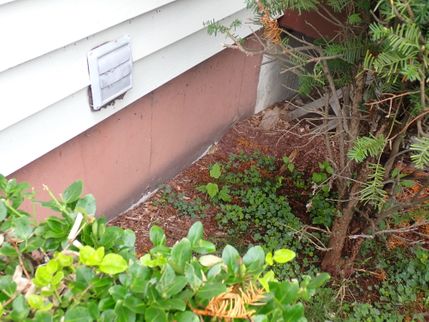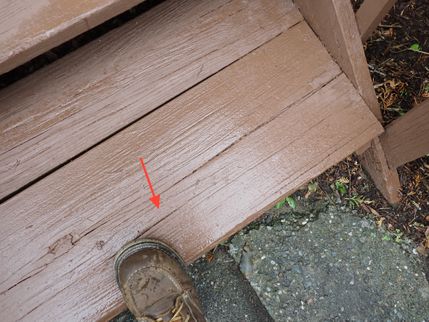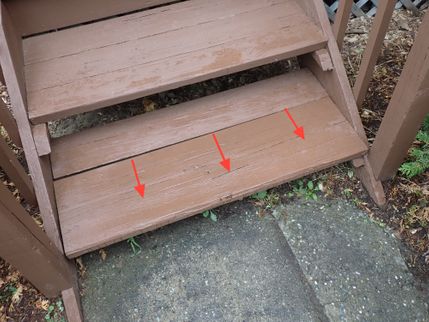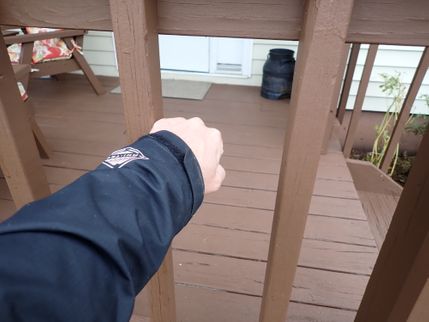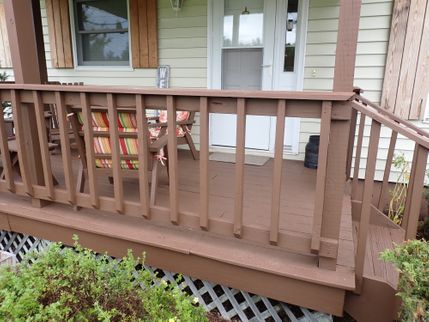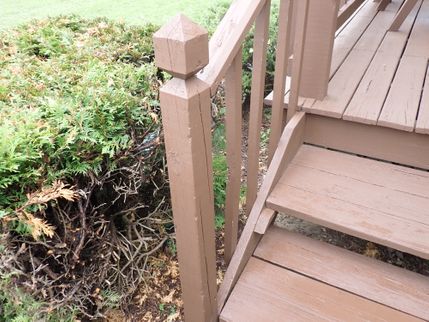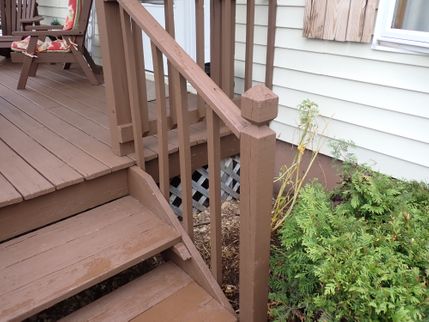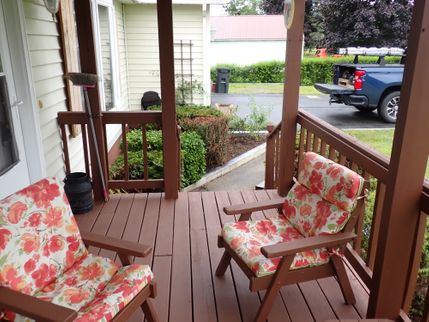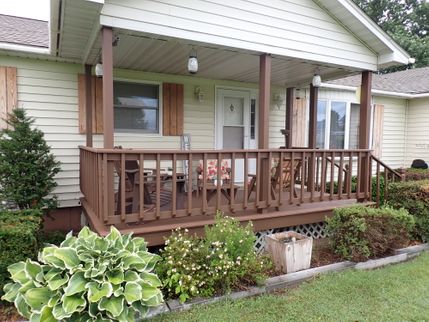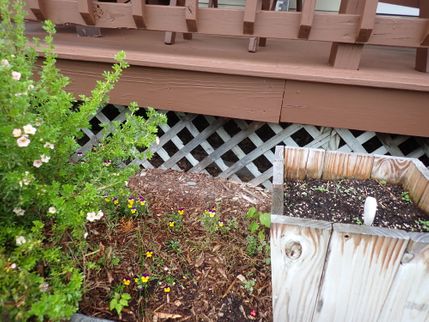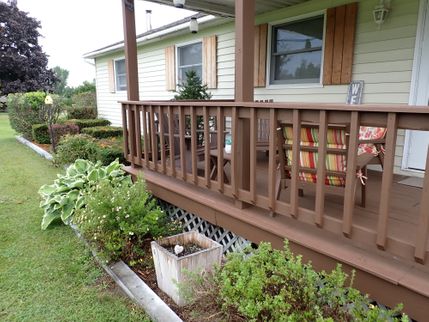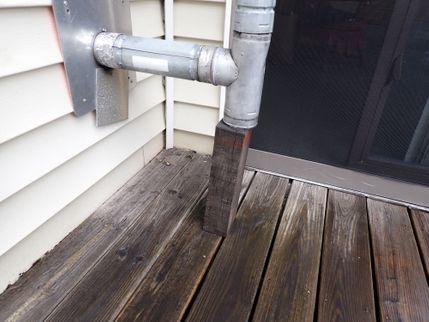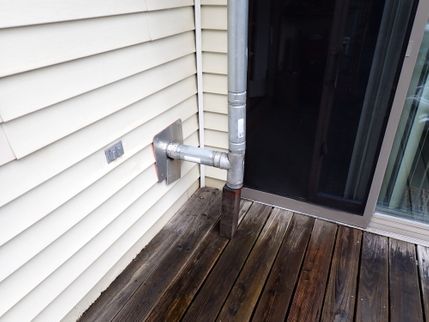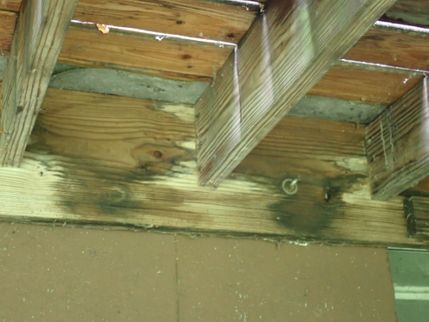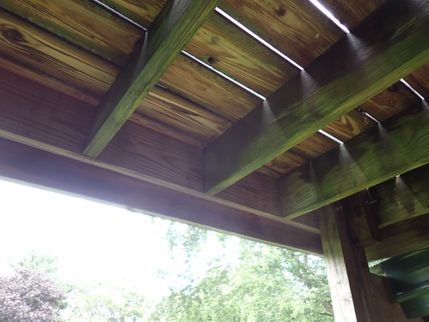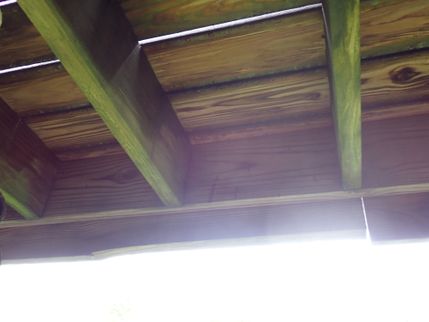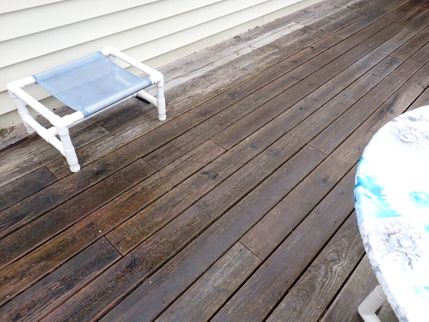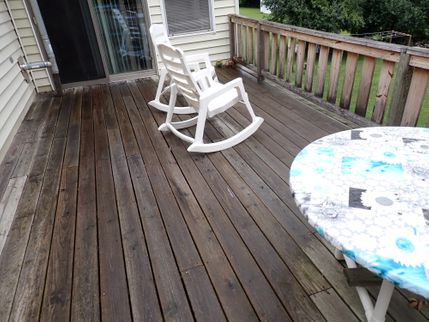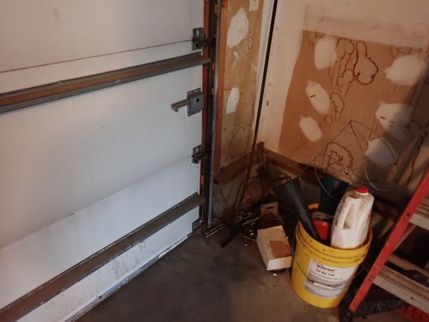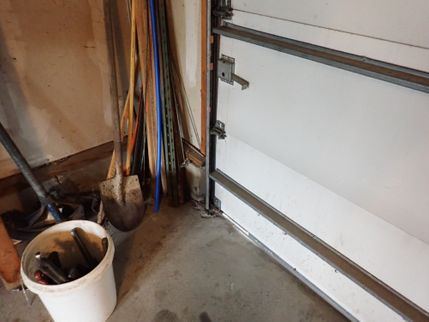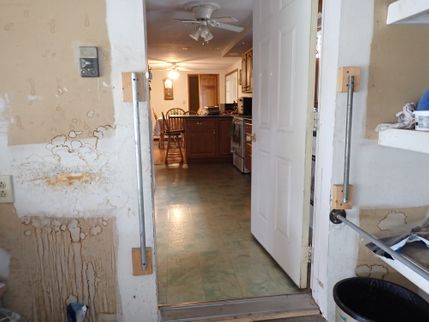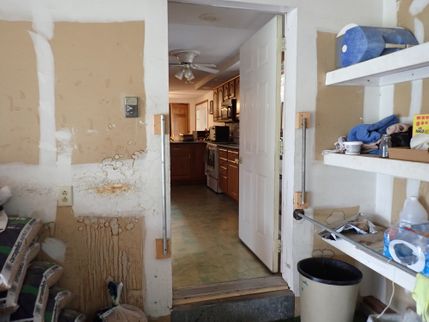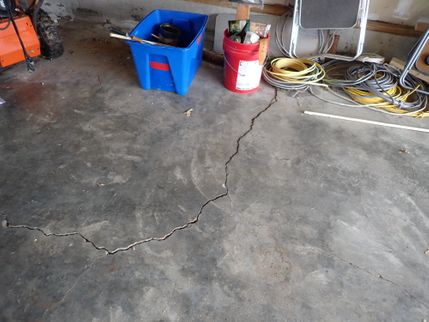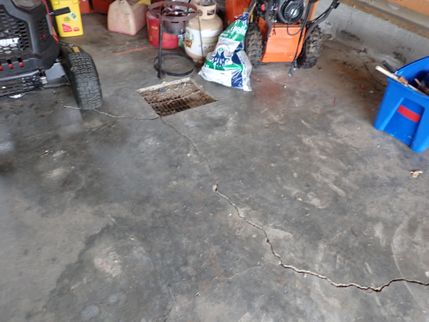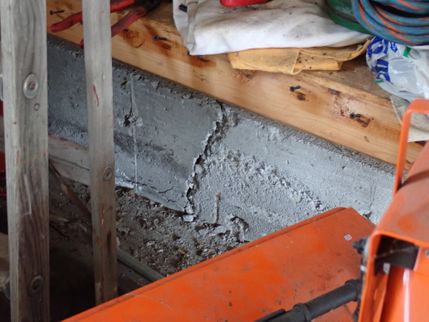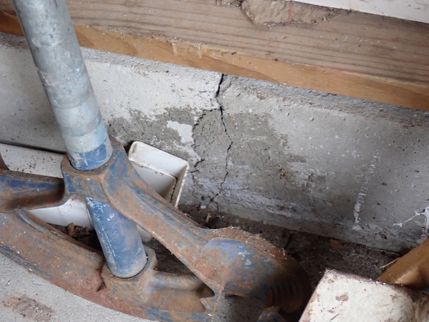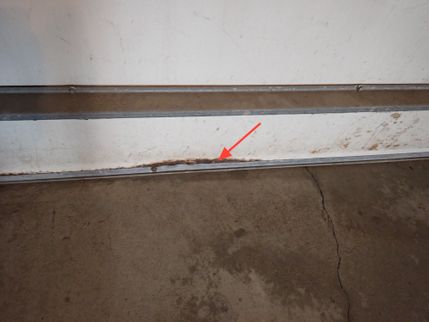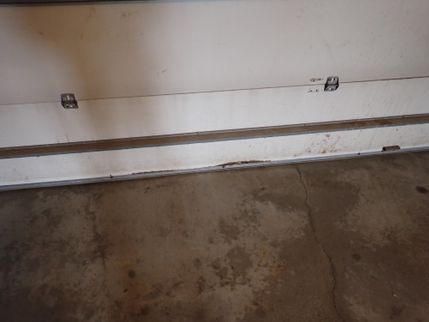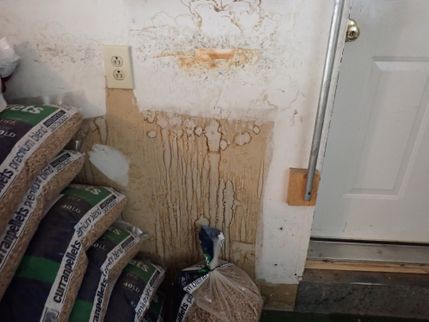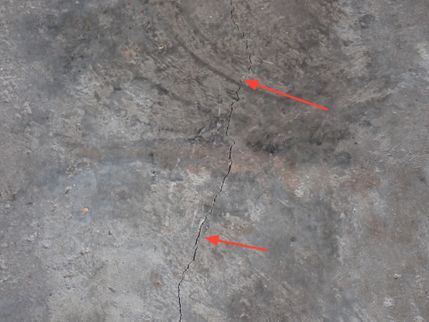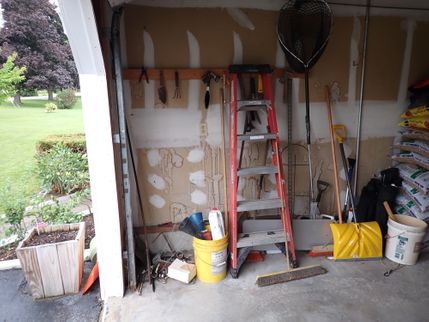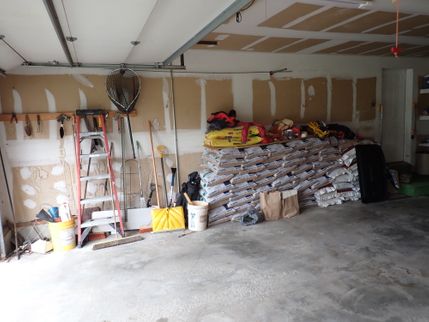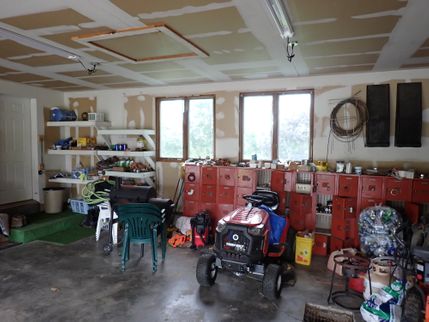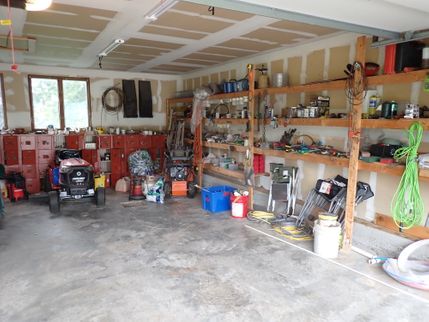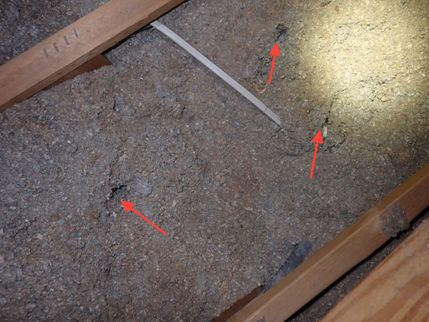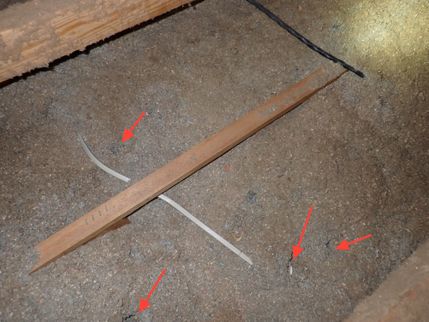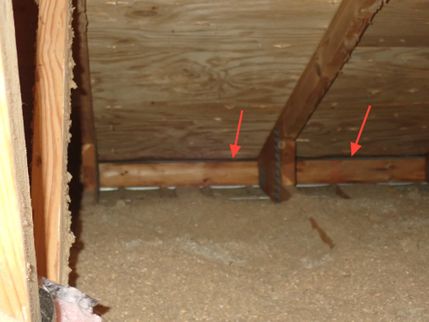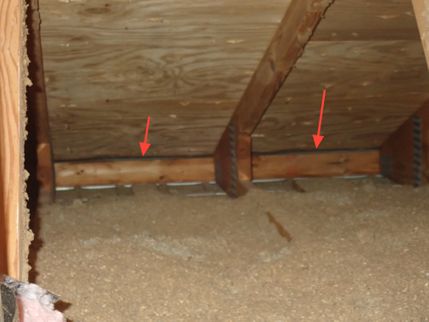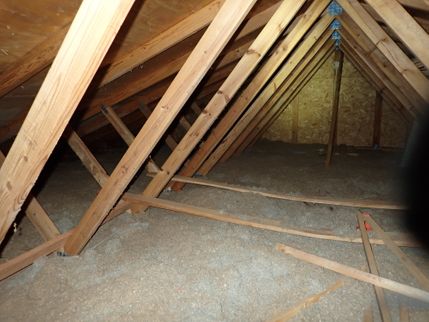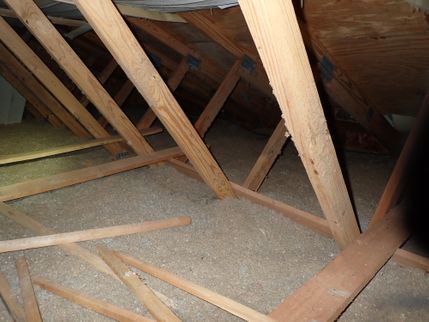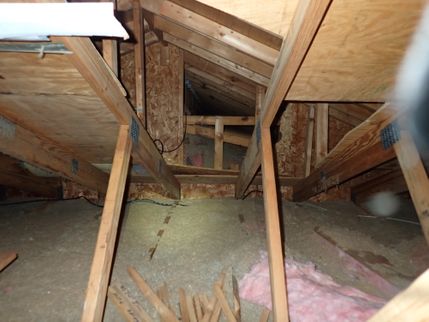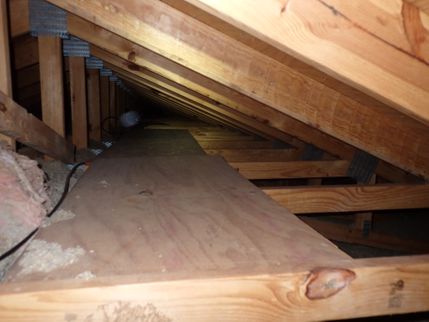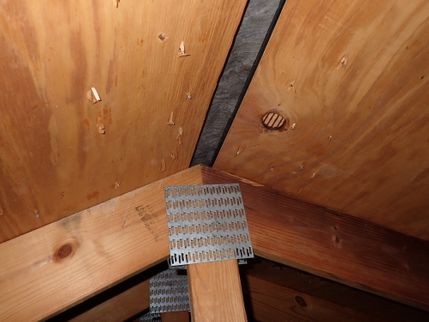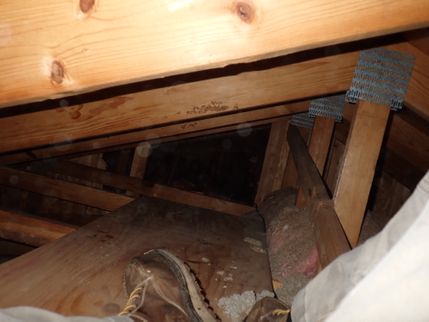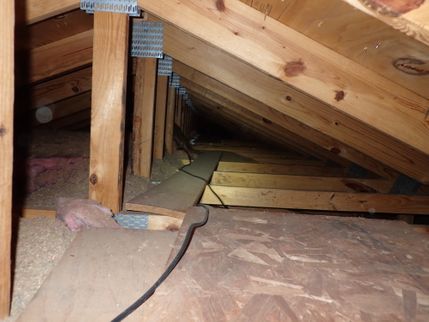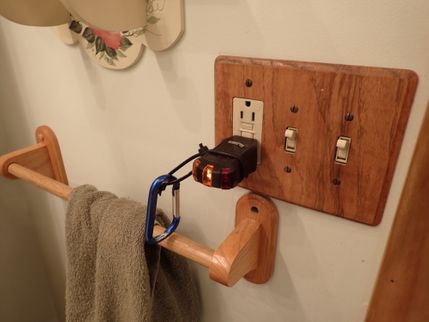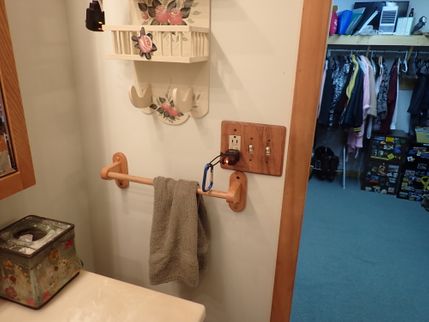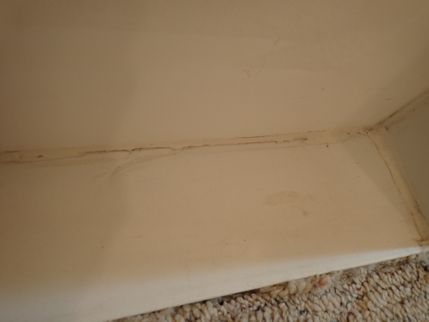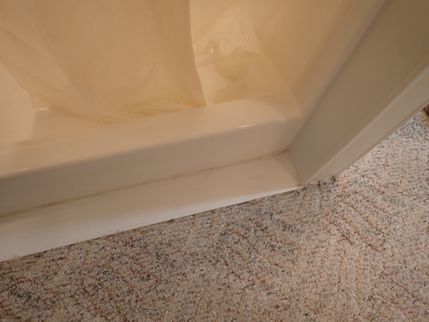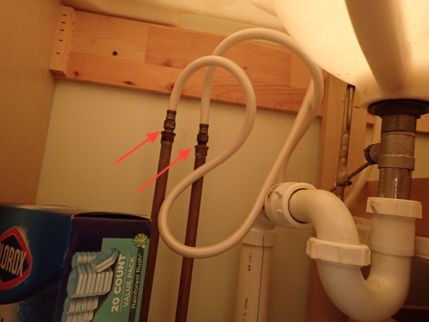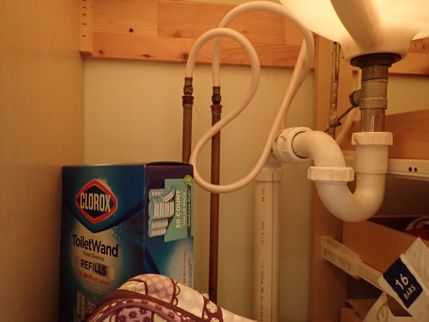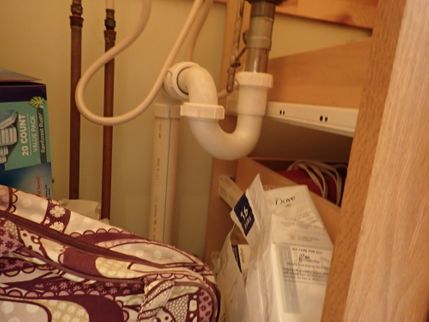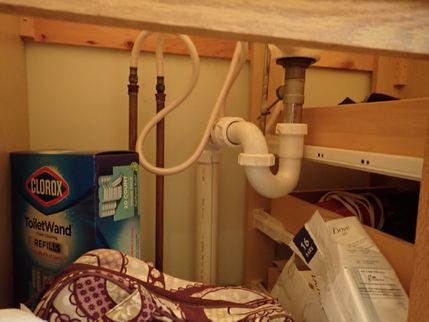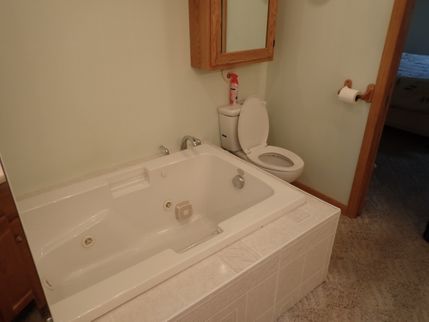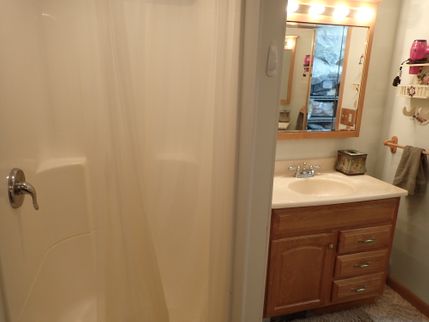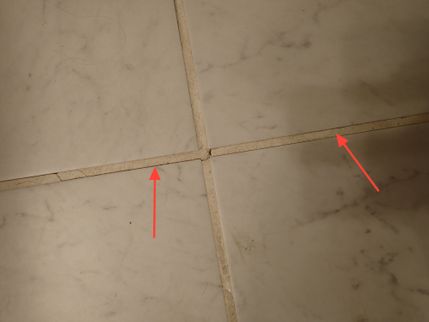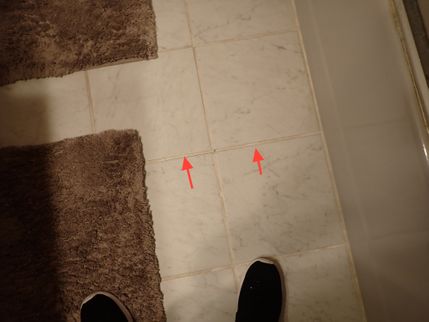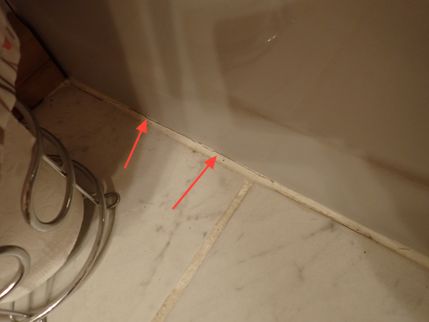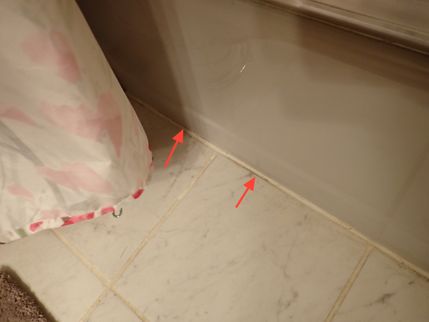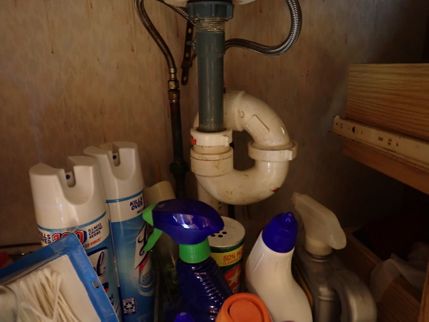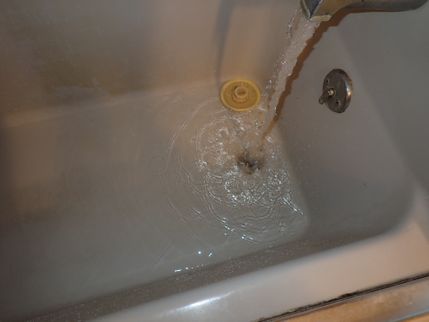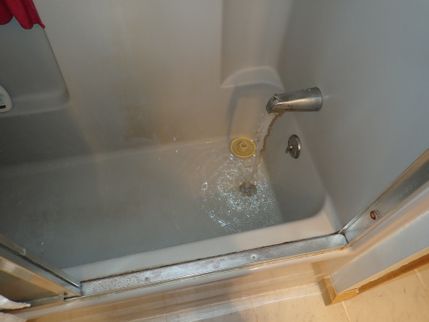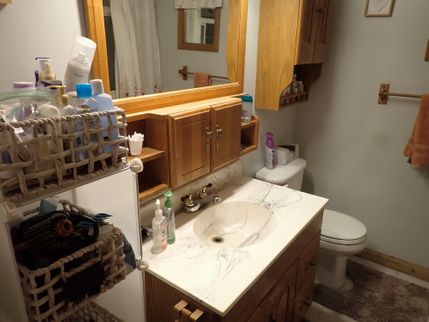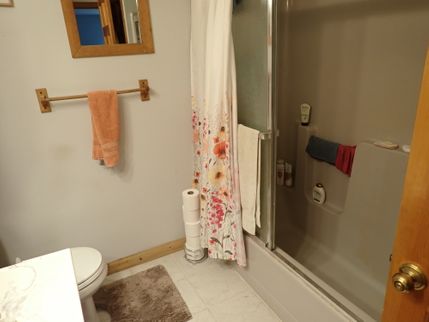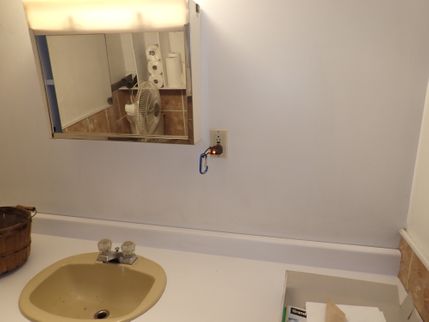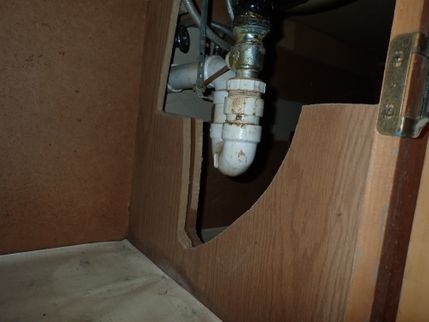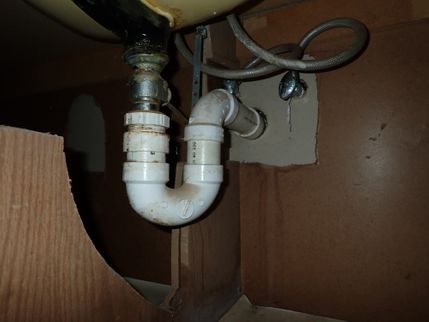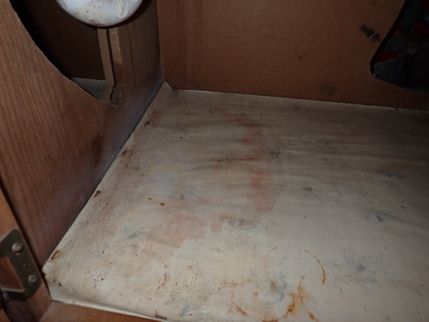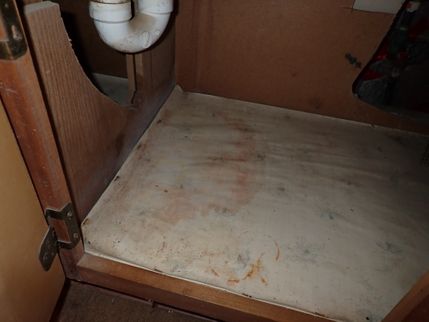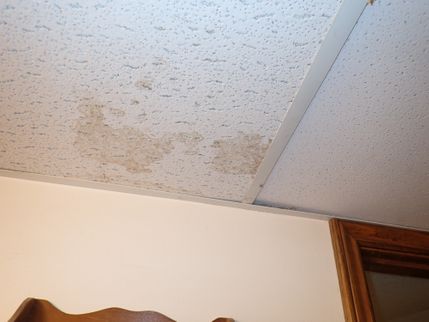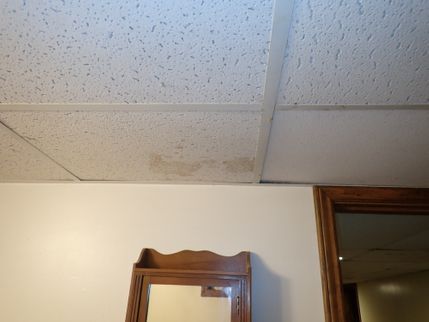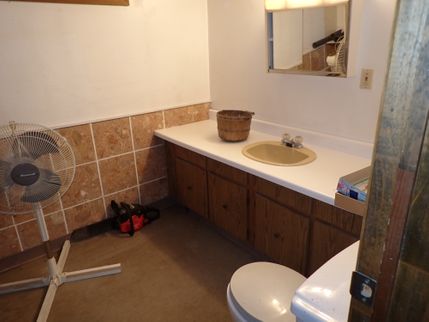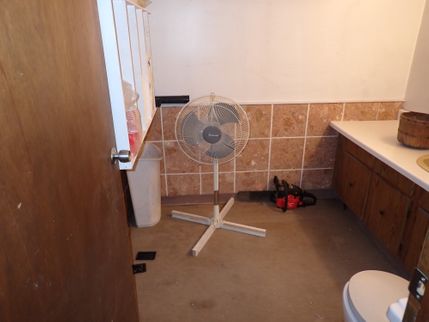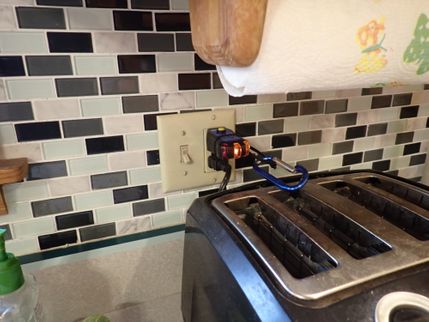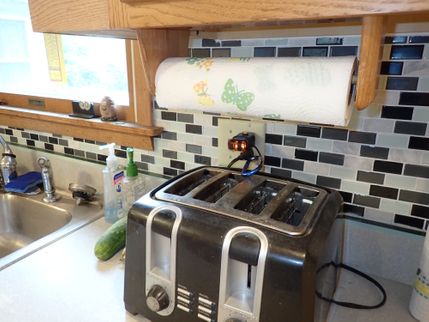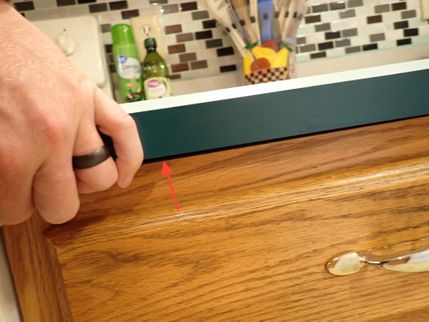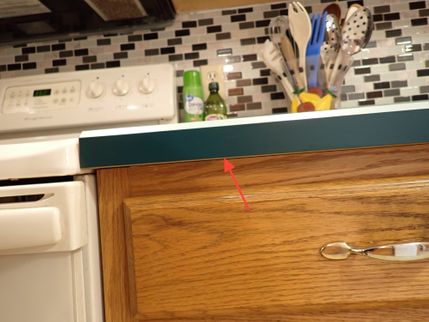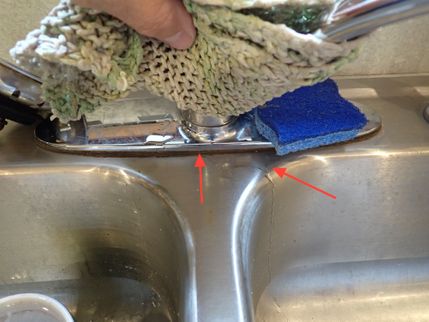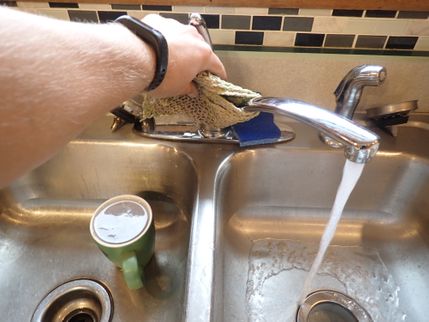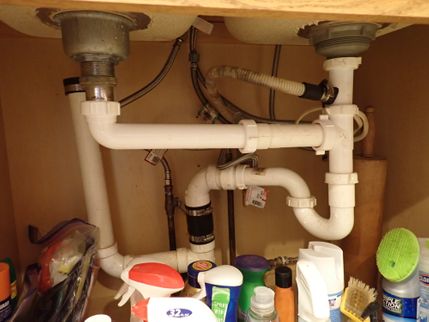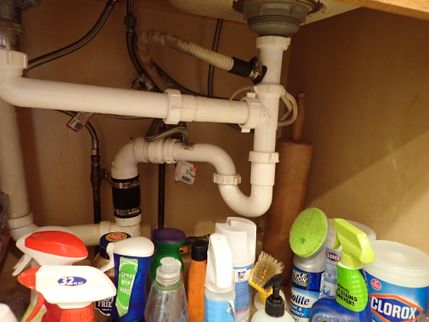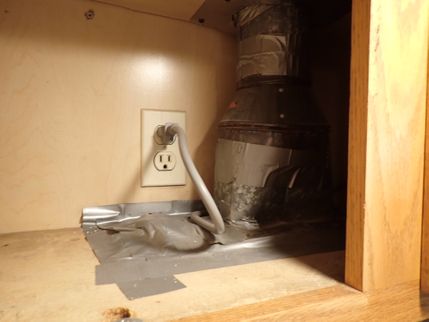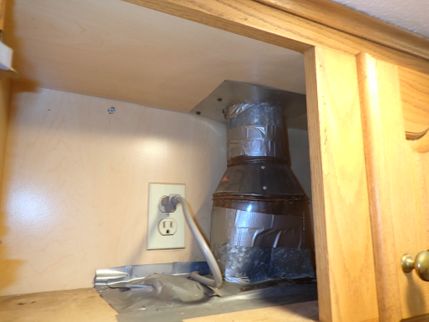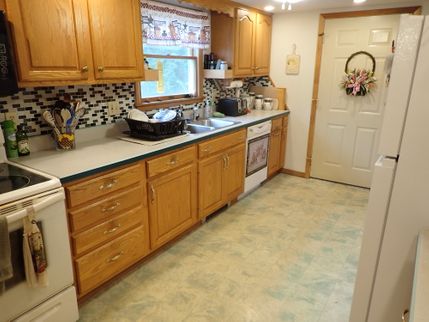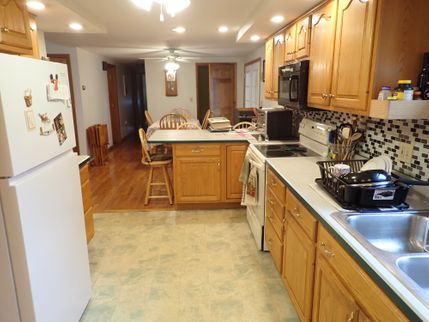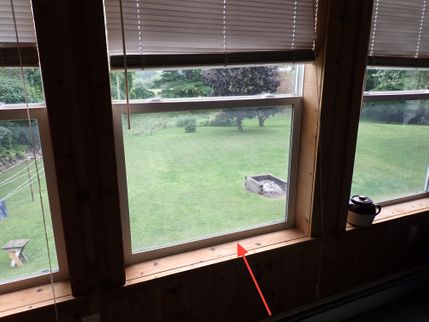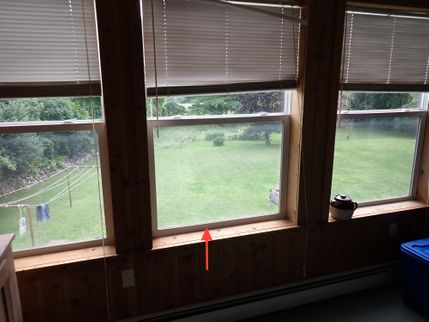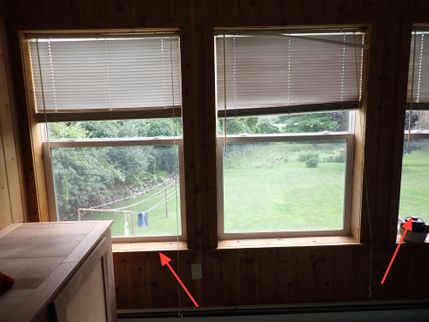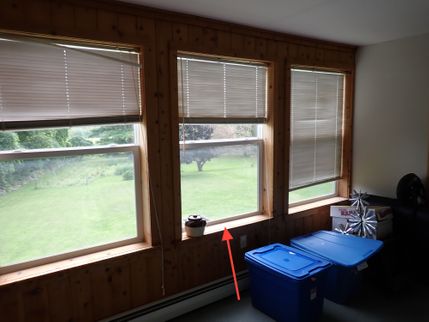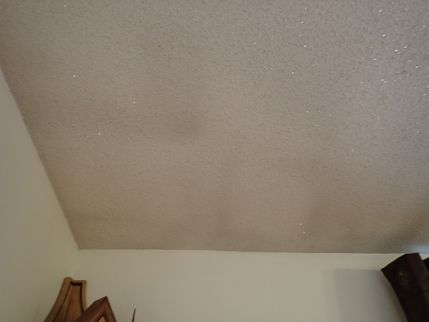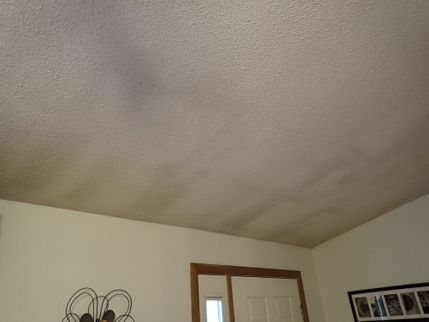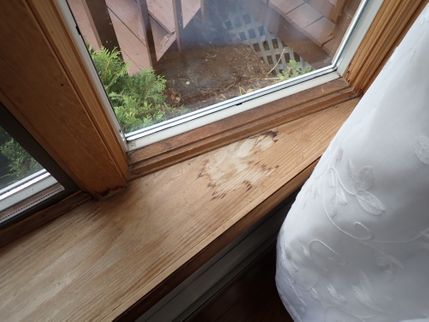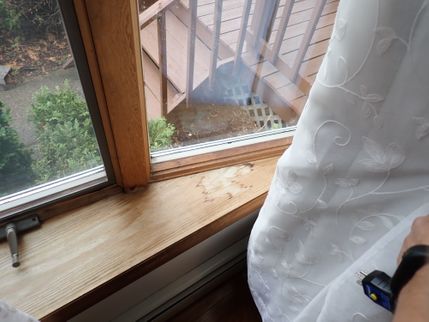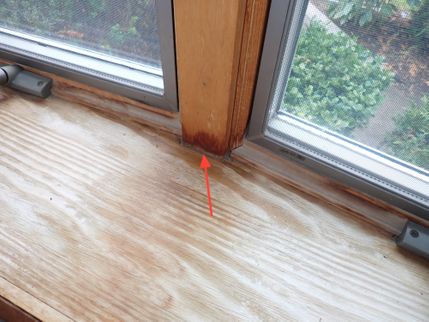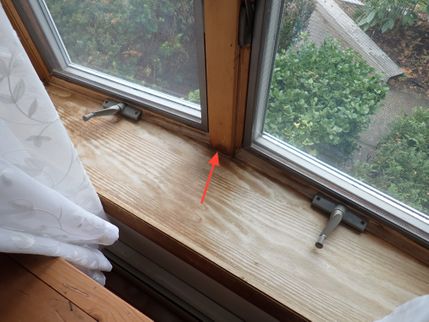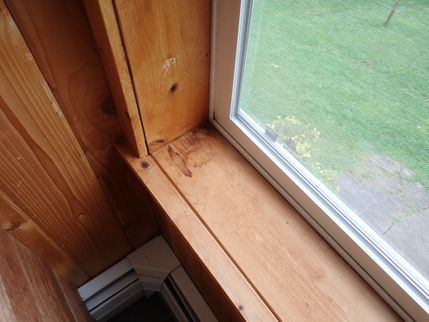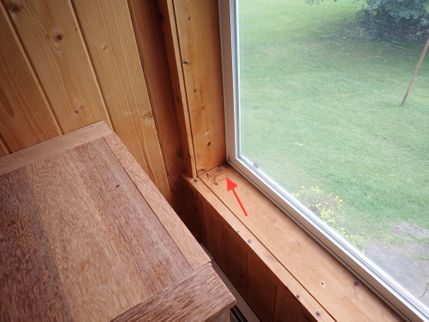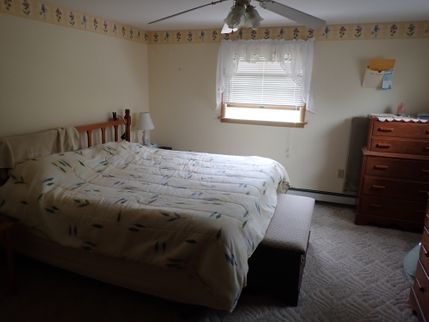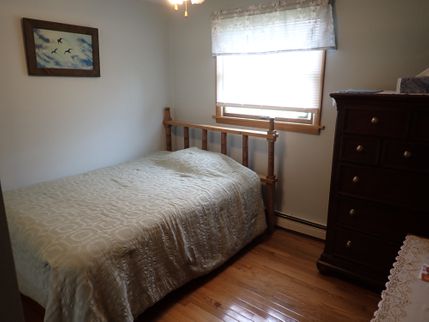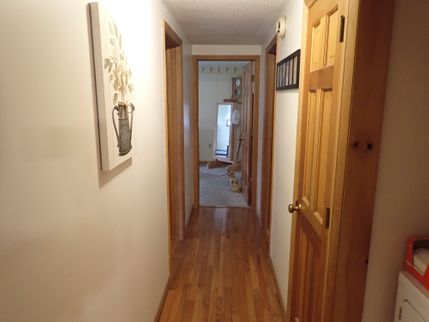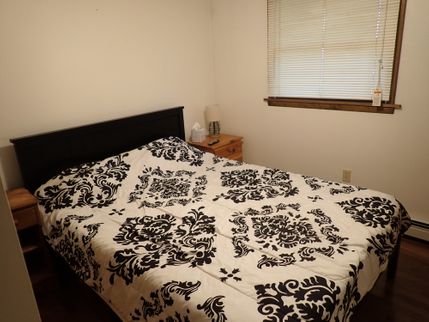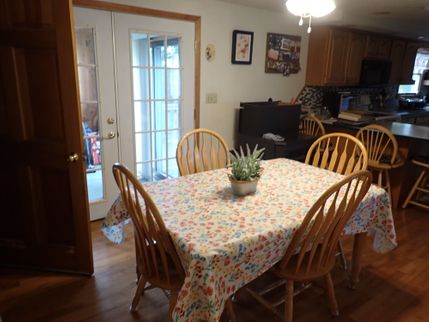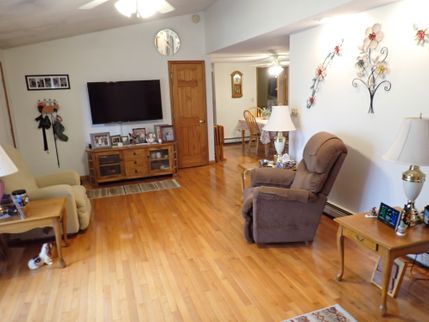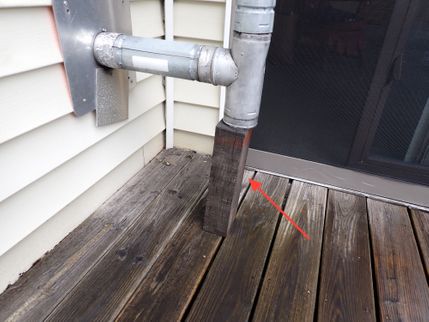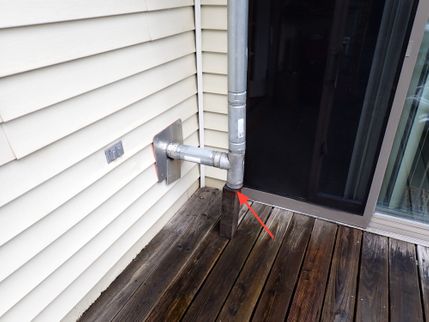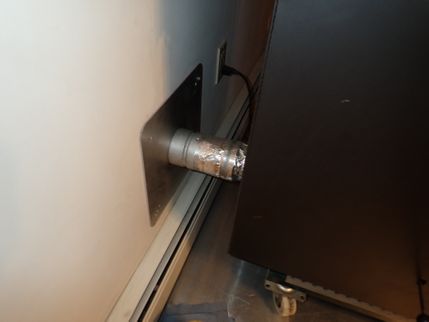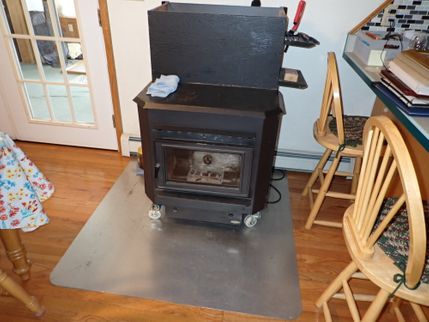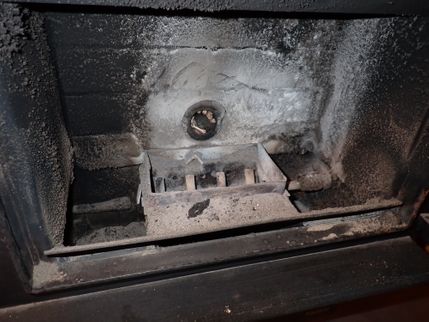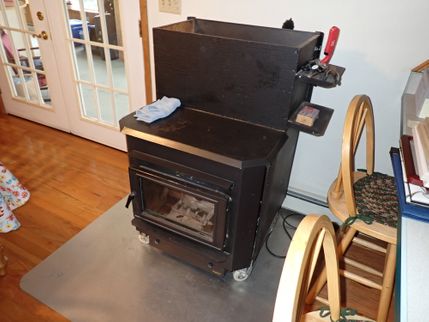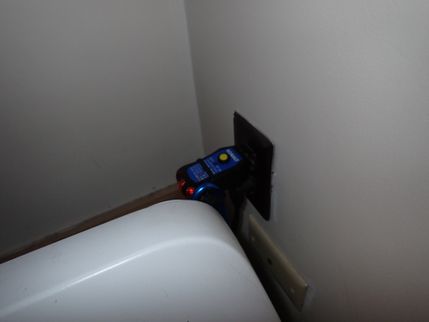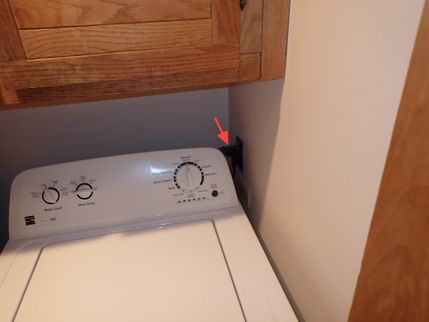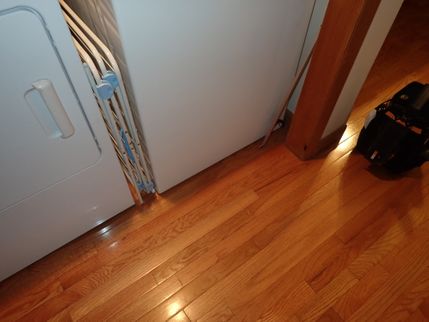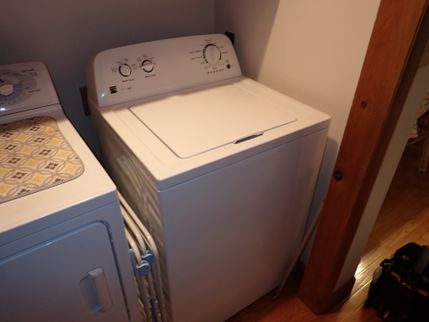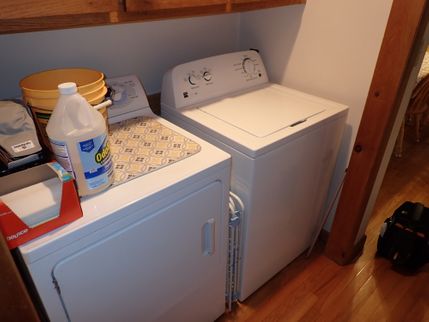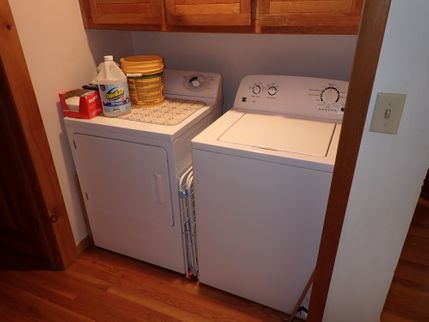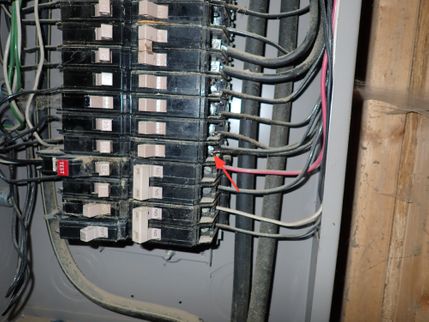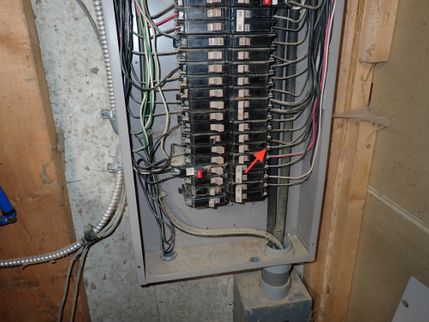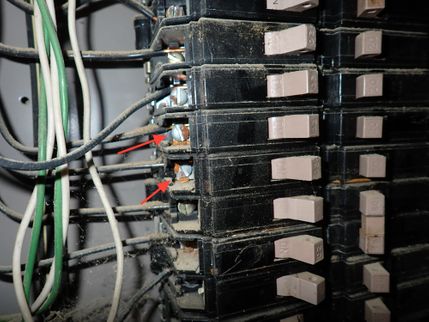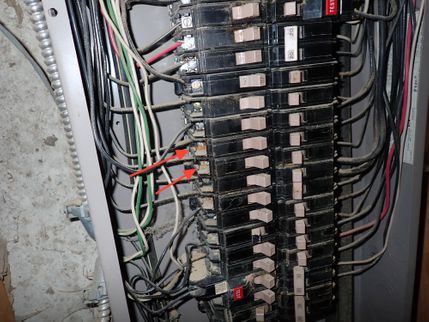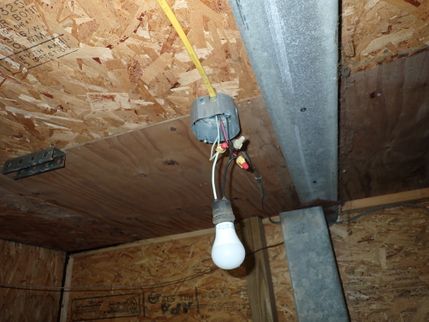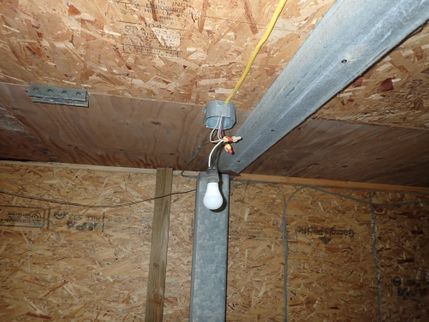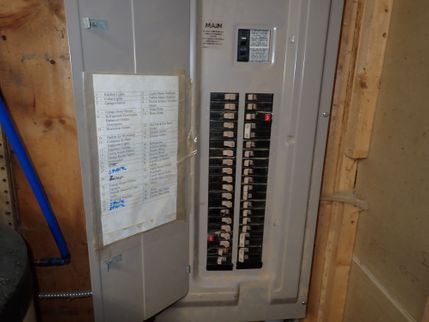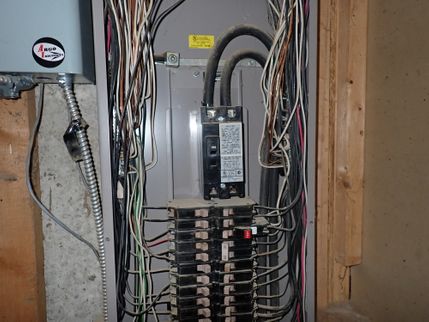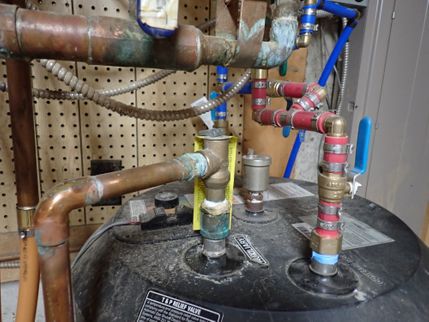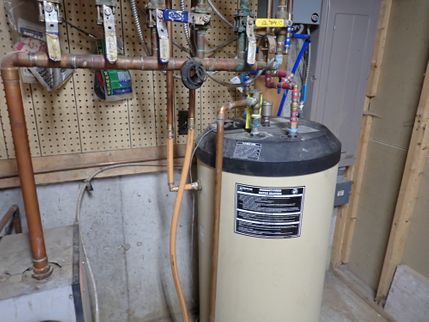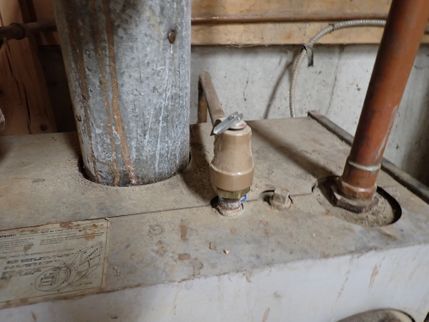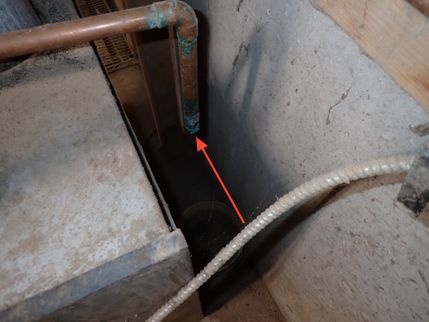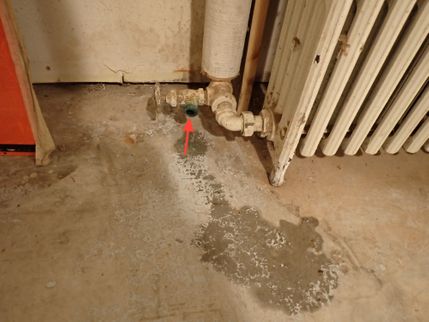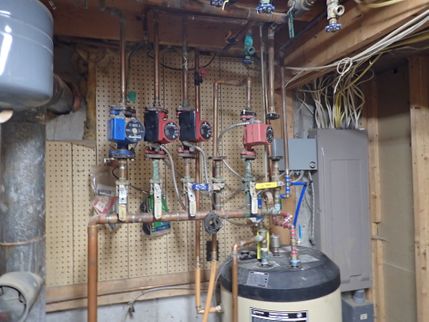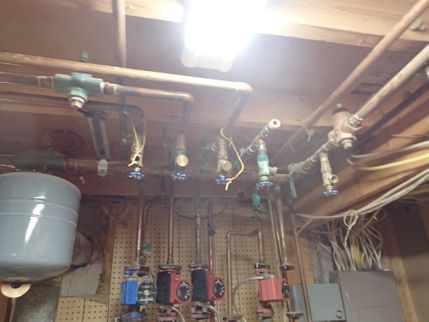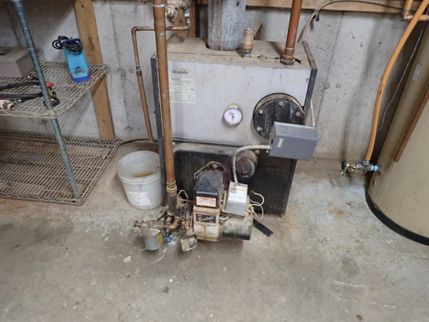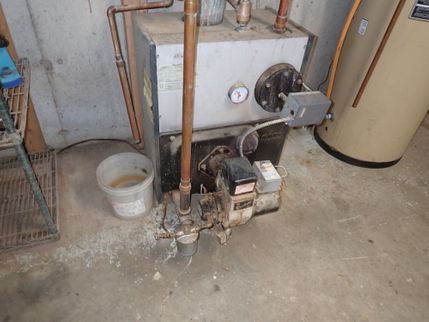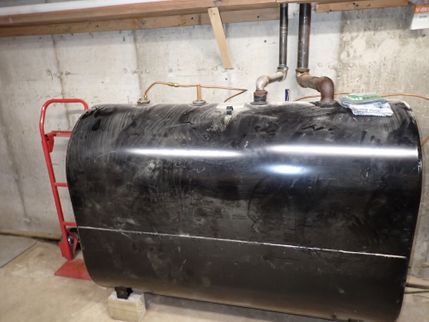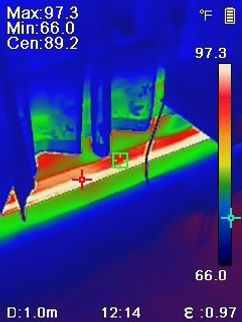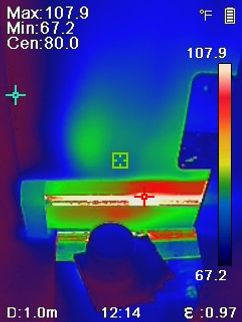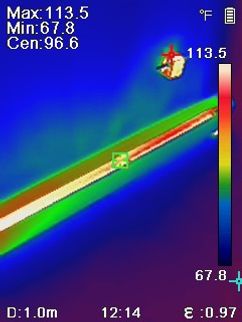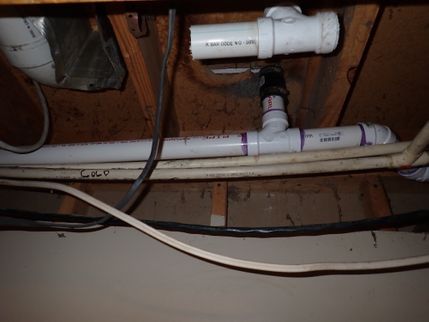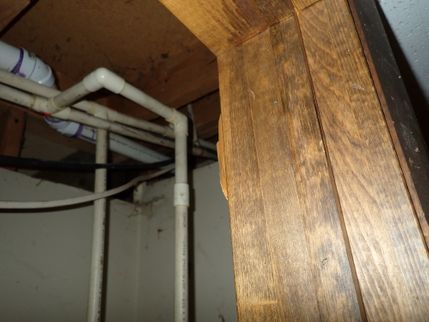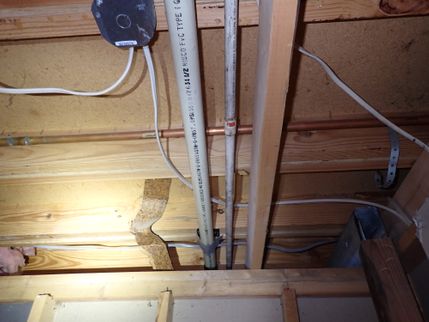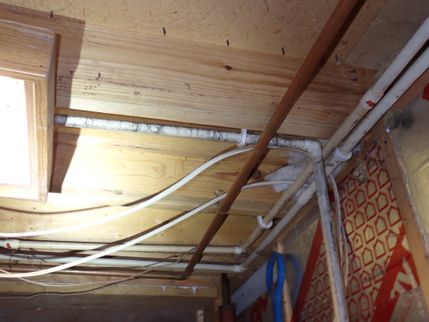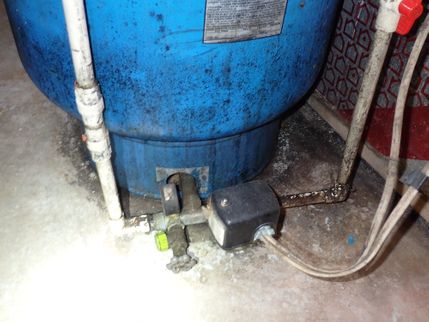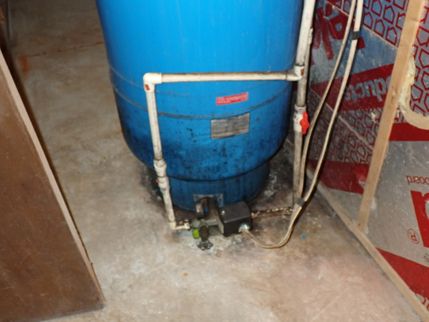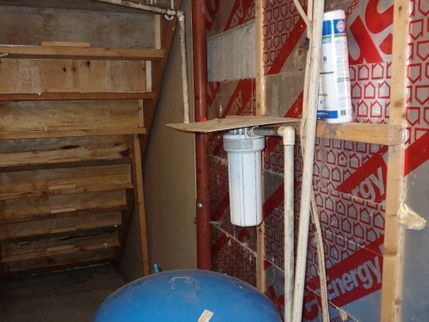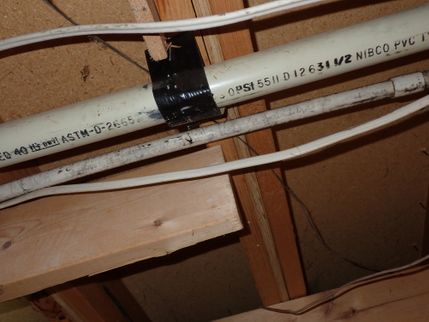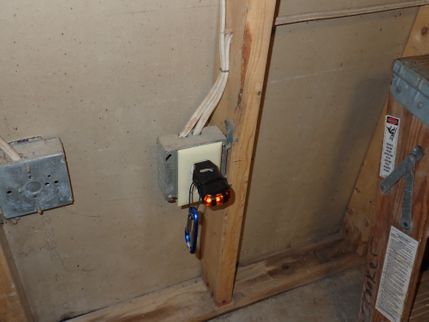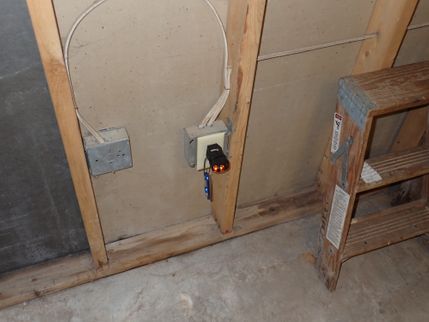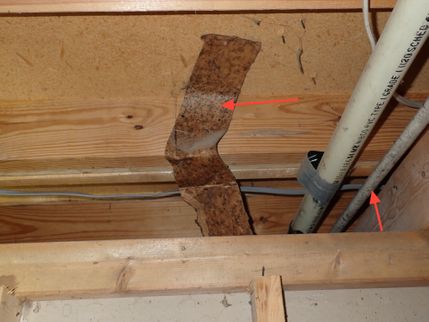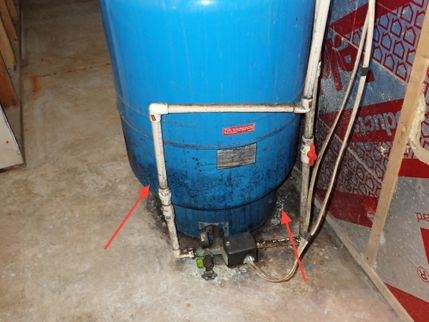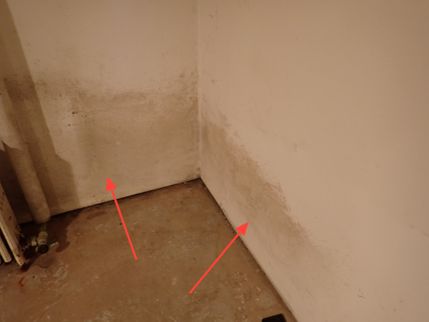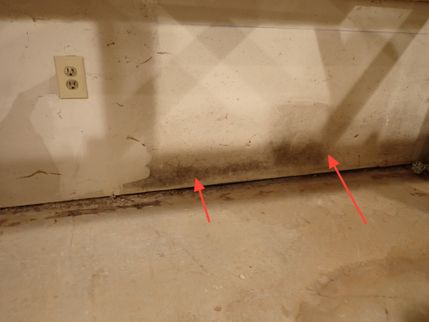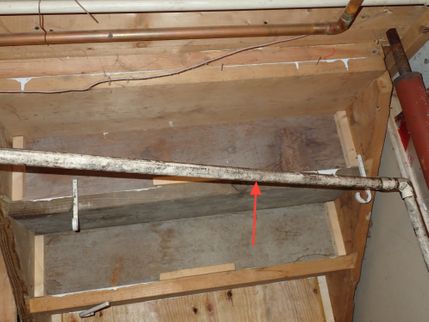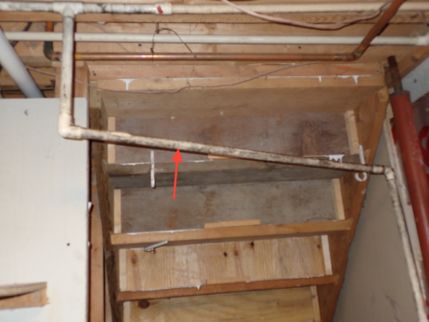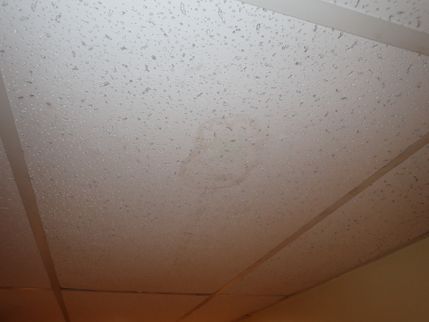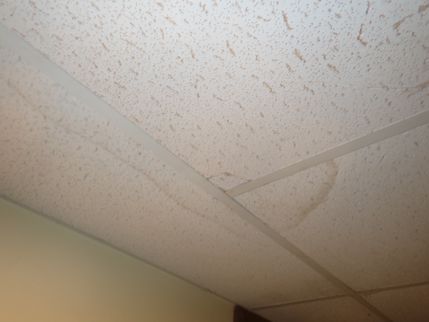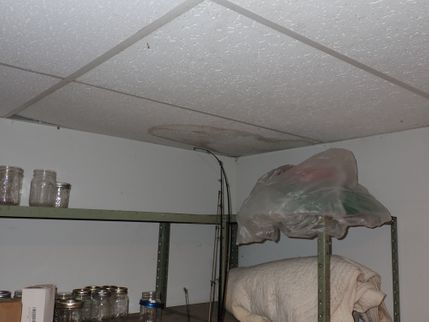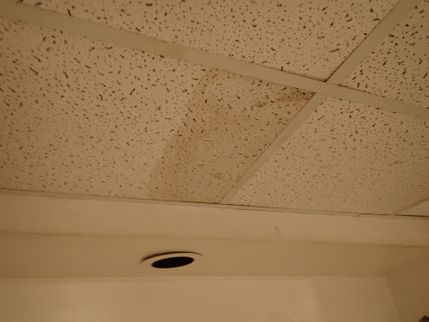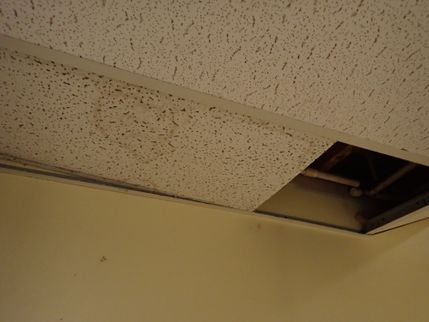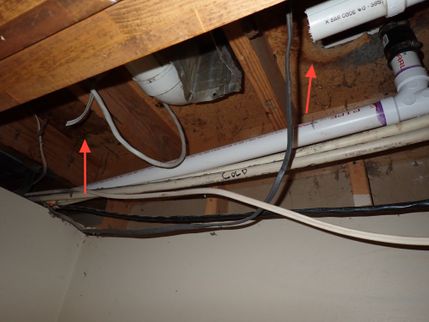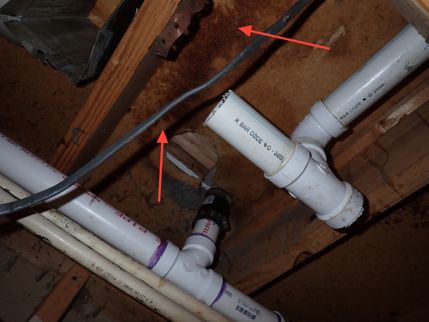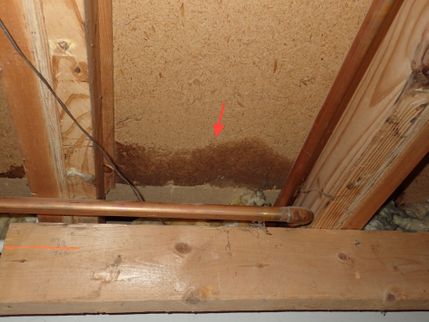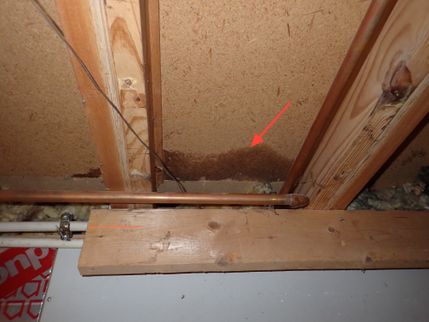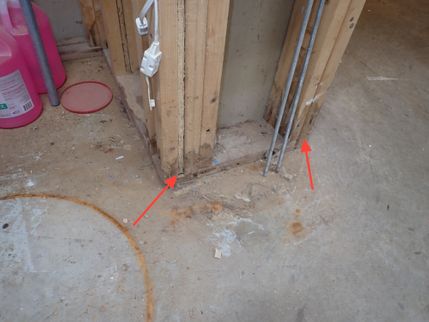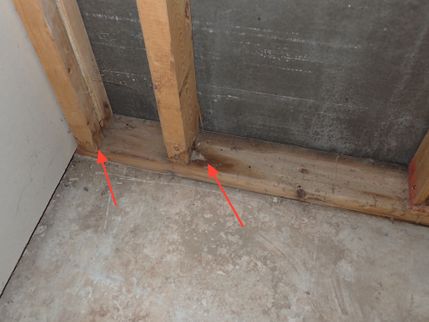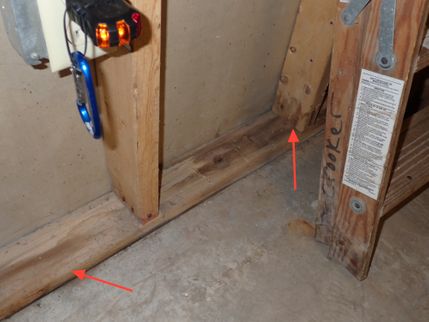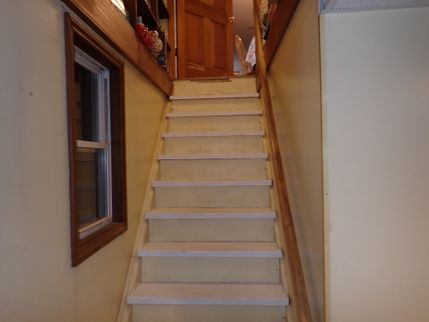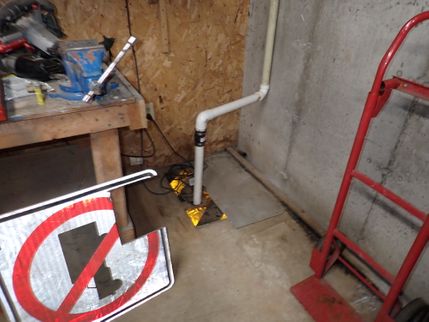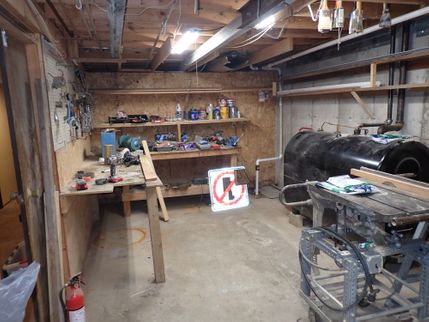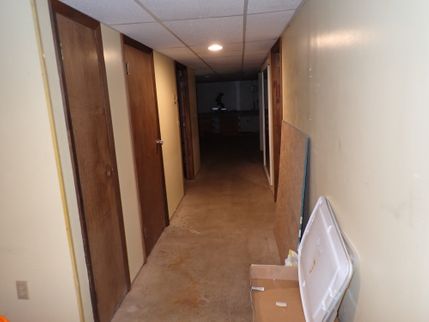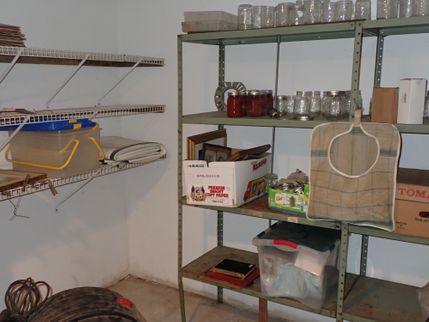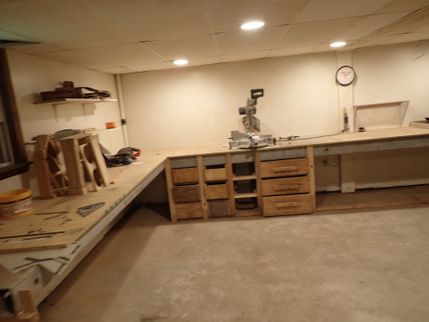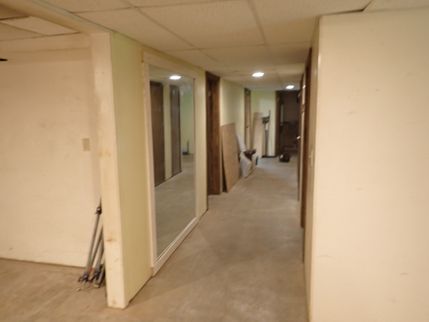The Scope and Purpose of a Home Inspection
Purchasing property involves risk
The purpose of a home inspection is to help reduce the risk associated with the purchase of a structure by providing a professional opinion about the overall condition of the structure. A home inspection is a limited visual inspection and it cannot eliminate this risk. Some homes present more risks than others. The goal of this report is to help educate you about the condition of the structure and systems contained within at the time of the inspection. This is more difficult to convey in a report and one of many reasons why it is recommended that you attend the inspection, or are present at the end of the inspection so that the findings can be conveyed in person and discussed.
A home inspection is not an insurance policy
This report does not substitute for or serve as a warranty or guarantee of any kind. Home warranties can be purchased separately from insuring firms that provide this service.
A home inspection is visual and not destructive
The descriptions and observations in this report are based on a visual inspection of the structure. We inspect the aspects of the structure that can be viewed without dismantling, damaging or disfiguring the structure and without moving furniture and interior furnishings. Areas that are concealed, hidden or inaccessible to view are not covered by this inspection. Some systems cannot be tested during this inspection as testing risks damaging the building. These procedures involve non-invasive investigation and non-destructive testing which will limit the scope of the inspection.
This is not an inspection for code compliance
As a home inspection service, Granite Peaks Home Inspections does not look at building code or code concerns. The goal of the inspection is to look at the safety, operation, and condition of the home and it's features. For concerns regarding code specifics, please contact your local municipality.
The scope of this inspection
This inspection will include the following systems: roof and ventilation, exterior walls, exterior grounds, attic, interior (kitchen, bathrooms, general), electrical, plumbing, heating, and foundation (basement or crawlspace). Other areas inspected may include: attached garages, detached garages, fireplaces, and air conditioning. Tests may also be done for radon and water quality. The evaluation will be based on limited observations that are primarily visual and non-invasive. This inspection and report are not intended to be technically exhaustive.
Your expectations
The overall goal of a home inspection is to help ensure that your expectations are appropriate with the house you are proposing to buy. The goal of Granite Peaks Home Inspections is to assist with discovery by showing and documenting observations during the home inspection. This should not be mistaken for a technically exhaustive inspection designed to uncover every defect with a building.
How to Read This Report
Getting the Information to You
This report is designed to deliver important and technical information in a way that is easy for anyone to access and understand. If you are in a hurry, you can take a quick look at our "Summary Page” and quickly get critical information for important decision making. However, we strongly recommend that you take the time to read the full Report, which includes digital photographs, captions, and descriptions containing additional information.
This report can also be printed on paper or to a PDF document.
Chapters and Sections
This report is divided into chapters that parcel the home into logical inspection components. Each chapter is broken into sections that relate to a specific system or component of the home. You can navigate between chapters with the click of a button on the left side margin.
Most sections will contain some descriptive information done in black font. Observation narrative, done in colored boxes, will be included if a system or component is found to be significantly deficient in some way or if we wish to provide helpful additional information about the system or the scope of our inspection. If a system or component of the home was deemed to be in satisfactory or serviceable condition, there may be no narrative observation comments in that section.
Observation Labels
All narrative observations are colored, numbered and labeled to help you find, refer to, and understand the severity of the observation. Observation colors and labels used in this report are:
- Safety:Items noted as defects that are identified as something that may cause bodily injury, shock hazards, fire hazards, etc.
- Evaluate:Items that may require a specialist to evaluate the existence or severity of defect noted.
- Repair:Repair and maintenance items noted during inspection. Please note that some repair items can be expensive to correct such as re-finishing hardwood floors, but are considered simply repair items due to their cosmetic nature.
- Recommended Maintenance:These are repair items that should be considered "routine home ownership items," such as servicing the furnace, cleaning the gutters or changing the air filters in the furnace.
- Monitor:Items that should be watched to see if correction may be needed in the future.
- Note:Refers to aside information and/or any comments elaborating on descriptions of systems in the home or limitations to the home inspection.
Summary Page
The Summary Page is designed as a bulleted overview of all the observations noted during inspection. This helpful overview is not a substitution for reading the entire inspection report. The entire report must be read to get a complete understanding of this inspection report as the Summary Page does not include photographs or photo captions.
Summary
Safeties
- EW-1 Exterior Walls:
Observed that one or more outlets were not GFCI (Ground Fault Circuit Interrupter) protected at the time of the inspection. Exterior outlets are recommended to be GFCI protected as they are more likely to be exposed to water or high levels of moisture. Water or moisture infiltration into a receptacle may present a shock or fire hazard. Recommend contacting a qualified electrician to repair as necessary.
- EG-1 Exterior Grounds:
Depressions, holes, and/or deterioration were observed in the driveway at the time of the inspection. These may present trip hazards to individuals walking or playing in the driveway. They may also present a hazard in the winters, as they can fill with water and freeze, becoming very slippery. Recommend contacting a qualified contractor to repair as necessary.
- EG-2 Exterior Grounds:
The walkway was observed to have cracks, deterioration, and/or depressions at the time of the inspection. This may present a trip hazard to individuals using the walkway. Recommend contacting a qualified contractor to repair as necessary.
- EG-10 Exterior Grounds:
The stairs appeared to have one or more areas of deterioration on them at the time of the inspection. This may present a safety hazard to individuals using the stairs. Continued deterioration may make the stairs unsafe for use. Recommend contacting a qualified contractor to repair as necessary.
- EG-11 Exterior Grounds:
The guardrail was observed to have no/insufficient balusters at the time of the inspection. Balusters are typically required to be no more than 4 inches apart. This may present a safety issue, especially to small children. Recommend contacting a qualified contractor to repair as necessary.
- EG-12 Exterior Grounds:
The handrail on the stairs was observed to be loose at the time of the inspection. This may present a fall hazard for any individuals using the stairs. Recommend contacting a qualified contractor to repair as necessary.
- EG-15 Exterior Grounds:
The pellet stove chimney was observed to be accessible on the deck at the time of the inspection. The accessible chimney may present a safety/burn hazard to occupants of the deck, especially children. Recommend contacting a qualified contractor to repair as necessary.
- AG-1 Attached Garage:
No safety photo-eyes were observed on the garage door(s) at the time of the inspection. This may present a safety hazard in the event an individual, pet, or object passes under the door while in operation. Recommend contacting a qualified contractor to repair as necessary.
- AG-2 Attached Garage:
Observed that the door separating the garage from the interior of the home was not self-closing at the time of the inspection. This may be a safety issue, as self-closing doors help to keep fumes from the garage out of the interior of the home. They also help to prevent any fire in the garage from spreading to the rest of the home. Recommend contacting a qualified contractor to repair as necessary.
- EB-1 Ensuite Bathroom:
Observed one or more outlets with open grounds at the time of the inspection. This may be a shock hazard if an appliance fault cannot discharge appropriately through a proper connection. Recommend contacting a qualified electrician to evaluate and repair as necessary.
- HB-1 Half Bathroom:
The GFCI (Ground Fault Circuit Interrupter) protected outlet was not functional at the time of the inspection. This may present a shock and/or fire hazard in the event water were to enter the outlet. Recommend contacting a qualified electrician to repair as necessary.
- K-1 Kitchen:
No anti-tip bracket was observed on the stove at the time of the inspection. This may present a safety hazard, especially for small children. Recommend contacting a qualified contractor to repair as necessary. No image available.
- K-2 Kitchen:
The GFCI (Ground Fault Circuit Interrupter) protected outlet was not functional at the time of the inspection. This may present a shock and/or fire hazard in the event water were to enter the outlet. Recommend contacting a qualified electrician to repair as necessary.
- K-3 Kitchen:
One or more sections of the countertop were observed to be loose at the time of the inspection. This may be a safety hazard, especially to small children, as loose countertops may continue to loosen over time and could be pulled off of the cabinets. Recommend contacting a qualified contractor to repair as necessary.
- GI-1 General Interior:
Carbon monoxide detectors were not observed on every floor of the home at the time of the inspection. This may be a safety hazard in the event of elevated carbon monoxide levels in the home. Recommend contacting a qualified contractor to repair as necessary. No image available.
- GI-2 General Interior:
One or more windows were observed to not stay open at the time of the inspection. This may present a safety hazard, especially to children, as a window may fall on an arm, hand, or finger(s) during operation. Recommend contacting a qualified contractor to repair as necessary.
- L-1 Laundry:
No GFCI (Ground Fault Circuit Interrupter) protected outlet was observed at the time of the inspection. GFCI protected outlets are typically recommended when an outlet is within six feet of a water source. This may present a shock and/or fire hazard in the event that water were to enter the outlet. Recommend contacting a qualified electrician to repair as necessary.
- ES-1 Electrical System:
Observed one or more double-tapped breakers at the time of the inspection. Double-tapped breakers are prone to coming loose and may cause arcing/sparking inside the panel, which may present a fire hazard. Recommend contacting a qualified electrician to repair as necessary.
- ES-2 Electrical System:
Corrosion was observed on one or more breakers in the electrical panel at the time of the inspection. This may indicate the presence of moisture or water entering the panel. Water in the electrical panel may lead to arcing/sparking, which can become a fire hazard. Recommend contacting a qualified contractor to repair as necessary.
- ES-3 Electrical System:
Observed one or more electrical connections made outside of junction box at the time of the inspection. Electrical connections outside of a junction box may present a shock hazard to individuals of the home. Recommend contacting a qualified electrician to repair as necessary.
- HS-1 Heating System:
No emergency shutoff was noted for the system at the time of the inspection. This may present a safety issue in the event of a system or component malfunction or failure. Recommend contacting a qualified contractor to repair as necessary. No image available.
- B-1 Basement:
One or more outlets were observed to not be GFCI (Ground Fault Circuit Interrupter) protected at the time of the inspection. Outlets in the basement are typically recommended to be GFCI protected as they are more prone to be exposed to water or high levels of moisture. Moisture infiltration into an outlet may present a shock and/or fire hazard. Recommend contacting a qualified electrician to repair as necessary.
Evaluates
- RV-1 Roof and Ventilation:
Roof sag was observed in one or more locations at the time of the inspection. Roof sag may be caused by undersized/inadequate rafters and/or roof sheathing material. If left unaddressed, roof sag may continue under excess snow load on the roof, and may further damage the structure and/or prevent water intrusion into the home. Recommend contacting a qualified contractor to evaluate and repair as necessary.
- RV-2 Roof and Ventilation:
Minimal soffit venting was observed on the home at the time of the inspection. Soffit vents are typically recommended when the home is also utilizing ridge venting to allow for proper air flow through the attic. Insufficient air flow through the attic space may allow for moisture accumulation and the potential growth of mold. Recommend contacting a qualified contractor to evaluate the amount of soffit vents for proper air flow and ventilation of the attic space.
- EG-3 Exterior Grounds:
Modifications to the grading and ground level appear to have been made at the rear of the home at some point prior to the inspection. The footing was exposed in one or more locations of the foundation and support walls and retaining walls were observed to have been added. Deflection was noted in multiple locations of the retaining walls. Improper removal of soil and bracing of the foundation may have a negative effect on the strength of the structure. Recommend contacting a qualified contractor to evaluate the condition of the foundation and supports, and inquire with the owner about work done for a history of potential work permits pulled or engineering design work done to modify the structure.
- EG-4 Exterior Grounds:
Cracks were observed in the foundation at the time of the inspection. These cracks included deflection of the foundation wall. This may be an indication of movement of the foundation and structure. Recommend contacting a qualified foundation contractor to evaluate the condition of the wall and repair as necessary.
- EG-5 Exterior Grounds:
One or more beams was observed to not be fully bearing on a support at the time of the inspection. Improper bearing of the beam may have a negative effect on the strength of the structure, and may be an indication of poor workmanship and/or movement of the structure over time. Recommend contacting a qualified contractor to evaluate and repair as necessary.
- AG-3 Attached Garage:
The floor at the rear of the garage was observed to be cracked and sloped at the time of the inspection. Cracks and slope were observed in areas relating to the cracks with deflection in the foundation noted in the "Exterior Grounds" section of the report. Cracked and sloping floors may be an indication of settlement of the structure. Recommend contacting a qualified contractor to evaluate and repair as necessary.
- A-1 Attic:
Evidence of rodents was observed in the attic at the time of the inspection. Evidence of rodents may include one or more of the following: the presence of tunnels in insulation, traps, nests, feces, remains of dead rodents, etc. Rodents may be destructive and may carry disease. Recommend contacting a qualified pest control contractor to evaluate and remediate as necessary.
- GI-3 General Interior:
One or more windows were observed to be difficult to operate at the time of the inspection. This may be an indication of faulty locks or handles, improper installation of the window, and/or that the window is older and may be sticking during operation. Recommend contacting a qualified contractor to evaluate and repair as necessary.
- B-2 Basement:
A mold-like substance was observed in one or more locations at the time of the inspection. The presence of a mold-like substance may indicate the presence of a leak or high levels of moisture in those areas. If left unaddressed, mold-like substances may also present health concerns. The area covered by the mold-like substance was observed to be more than 10 square feet. Recommend contacting a qualified contractor to evaluate the area and remediate as necessary.
- B-3 Basement:
Water staining was observed on one or more locations of the drop ceiling tiles at the time of the inspection. One or more of the stains were observed to be wet. This may be an indication of an active leak above the tiles. Recommend contacting a qualified contractor to evaluate and repair as necessary.
Repairs
- RV-3 Roof and Ventilation:
Observed exposed nails on the roof of the home at the time of the inspection. Exposed nails may allow water to penetrate the roof covering, which may lead to deterioration of the roof structure below. Recommend contacting a qualified contractor to repair as necessary.
- RV-4 Roof and Ventilation:
Observed the improper use of architectural shingles as ridge cap shingles in one or more locations of the roof at the time of the inspection. This is not a standard building practice, as the multiple layers of the architectural shingles may allow for moisture and debris to accumulate in gaps and grooves when used as a ridge cap. Recommend contacting a qualified contractor to repair as necessary.
- RV-5 Roof and Ventilation:
Observed moss growth on the roof covering of the home at the time of the inspection. Moss retains moisture against the covering of the roof which may allow for moisture penetration to the roof sheathing and structure underneath. Recommend contacting a qualified contractor to repair as necessary.
- RV-6 Roof and Ventilation:
Improper installation or lack of flashing observed in one or more locations of the roof at the time of the inspection. Flashing should be installed underneath the bottom course of siding to prevent moisture/water intrusion into the roof structure. Recommend contacting a qualified contractor to repair as necessary.
- RV-7 Roof and Ventilation:
Observed cracking in one or more locations of the roof where roof sealant was used over flashing or roof penetrations. Cracks may allow for moisture intrusion into the structure below. Recommend contacting a qualified contractor to repair as necessary.
- RV-8 Roof and Ventilation:
The chimney appeared to be too close to the roof covering at the time of the inspection. Typically, chimneys should be at least three feet tall and terminate at least two feet above any area of the roof within ten feet. Failure to do so may lead to issues with drafting. Recommend contacting a qualified contractor to repair as necessary.
- RV-9 Roof and Ventilation:
Improper installation or lack of flashing observed on the chimney at the time of the inspection. This may allow for moisture/water intrusion into the roof structure. Recommend contacting a qualified contractor to repair as necessary.
- EW-2 Exterior Walls:
OSB was observed on the underside of the addition at the time of the inspection. OSB is not recommended as an exterior surface material due to its ability to absorb and retain moisture. This may allow for moisture intrusion into the structure and/or accelerated deterioration of components. Recommend contacting a qualified contractor to repair as necessary.
- EW-3 Exterior Walls:
Observed non-treated wood in contact with soil at the time of the inspection. Non-treated wood may absorb moisture and deteriorate at an accelerated rate when in contact with soil. It may also prevent an avenue for insects to find their way into the structure of the home. Recommend contacting a qualified contractor to repair as necessary.
- EW-4 Exterior Walls:
Observed algae and/or mold growth on the wall covering of the home at the time of the inspection. Algae/mold growth may retain moisture against the wall covering, which may lead to accelerated deterioration of wall covering or moisture penetration into the structure of the home. Recommend contacting a qualified contractor to repair as necessary.
- EW-5 Exterior Walls:
Moisture staining and/or deterioration was observed on the structural supports for the storage area at the rear of the home at the time of the inspection. Moisture staining and deterioration may be an indication of improper flashing and/or improper installation of the roof covering. Continued deterioration may have a negative effect on the strength of the structure. Recommend contacting a qualified contractor to repair as necessary.
- EW-6 Exterior Walls:
Observed what appeared to be a mold-like substance in the storage area under the addition at the time of the inspection. This may be an indication of high levels of moisture/humidity in the area. The area observed appeared to be less than 10 square feet. Recommend contacting a qualified contractor to repair as necessary.
- EG-6 Exterior Grounds:
A negative grade was observed in one or more locations of the property at the time of the inspection. Negative grading may allow for the flow of water toward the house and against the foundation. This may ultimately lead to problems with the foundation and/or water infiltration into the basement/crawlspace. Recommend contacting a qualified contractor to repair as necessary.
- EG-7 Exterior Grounds:
One or more supports for the addition were observed to not be plumb or properly fastened to a footing at the time of the inspection. Supports out of plumb may be an indication that they have settled/moved after construction. Improper or inadequate fastening of the supports may allow for them to continue to settle and move over time. Recommend contacting a qualified contractor to repair as necessary.
- EG-8 Exterior Grounds:
Erosion was observed in the added parking area by the retaining wall at the time of the inspection. This may be an indication of improper grading of the parking area and/or gaps and holes in the retaining wall. Continued erosion may make the area unusable for parking as currently intended. Recommend contacting a qualified contractor to repair as necessary.
- EG-16 Exterior Grounds:
Observed that joist hangers were not used during construction of the structure. Current construction standards typically require the use of joist hangers for attaching joists to ledger boards and rim joists to provide a stronger, more secure connection. Other fastening methods are typically not as strong. Recommend contacting a qualified contractor to repair as necessary.
- AG-4 Attached Garage:
Corrosion was observed on one or more vehicle doors at the time of the inspection. Continued corrosion may have a negative effect on the sealing of the door and may allow for moisture, insect, and/or vermin intrusion into the structure. Recommend contacting a qualified contractor to repair as necessary.
- EB-2 Ensuite Bathroom:
Observed cracked and/or deteriorated caulking at the time of the inspection. This may allow for water infiltration into the structure/subfloor of the home. Recommend contacting a qualified contractor to repair as necessary.
- EB-3 Ensuite Bathroom:
No water cutoffs were observed under the sink at the time of the inspection. This may prevent the water from being turned off in the event of a leak or component failure. Recommend contacting a qualified contractor to repair as necessary.
- EB-4 Ensuite Bathroom:
An s-trap was observed under the sink at the time of the inspection. S-traps are not recommended in current construction standards as they may be more susceptible to slow draining and may also siphon themselves out, allowing for the back flow of sewer gases into the home. Recommend contacting a qualified contractor to repair as necessary.
- MB-1 Main Bathroom:
Observed that the toilet was loose at the time of the inspection. This may allow for the toilet to leak and may also allow for the back flow of sewer gases into the home. Recommend contacting a qualified contractor to repair as necessary. No image available.
- MB-2 Main Bathroom:
Cracks and/or insufficient tile grouting was observed at the time of the inspection. This may allow for water infiltration into the sub-floor and structure of the home. Recommend contacting a qualified contractor to repair as necessary.
- MB-3 Main Bathroom:
Observed cracked and/or deteriorated caulking at the time of the inspection. This may allow for water infiltration into the structure/subfloor of the home. Recommend contacting a qualified contractor to repair as necessary.
- MB-4 Main Bathroom:
An s-trap was observed under the sink at the time of the inspection. S-traps are not recommended in current construction standards as they may be more susceptible to slow draining and may also siphon themselves out, allowing for the back flow of sewer gases into the home. Recommend contacting a qualified contractor to repair as necessary.
- MB-5 Main Bathroom:
The tub was observed to be slow to drain at the time of the inspection. This may allow for the tub to overflow unintentionally if left unattended. Recommend contacting a qualified contractor to repair as necessary.
- HB-2 Half Bathroom:
Observed that the toilet was loose at the time of the inspection. This may allow for the toilet to leak and may also allow for the back flow of sewer gases into the home. Recommend contacting a qualified contractor to repair as necessary. No image available.
- HB-3 Half Bathroom:
An s-trap was observed under the sink at the time of the inspection. S-traps are not recommended in current construction standards as they may be more susceptible to slow draining and may also siphon themselves out, allowing for the back flow of sewer gases into the home. Recommend contacting a qualified contractor to repair as necessary.
- K-4 Kitchen:
One or more sink fixtures was observed to be leaking at the time of the inspection. Recommend contacting a qualified contractor to repair or replace as necessary.
- K-5 Kitchen:
An s-trap was observed under the sink at the time of the inspection. S-traps are not recommended in current construction standards as they may be more susceptible to slow draining and may also siphon themselves out, allowing for the back flow of sewer gases into the home. Recommend contacting a qualified contractor to repair as necessary.
- K-6 Kitchen:
Observed one or more areas of ducting with improper connection materials at the time of the inspection. Improper connection materials may not seal properly and allow for humid air to escape the vent. Recommend contacting a qualified contractor to repair as necessary.
- GI-4 General Interior:
Thermal bridging was observed in one or more locations of the home at the time of the inspection. Thermal bridging may be an indication of improper or inadequate insulation in ceiling/attic structure of the home. Recommend contacting a qualified contractor to repair as necessary.
- F-1 Fireplace:
The chimney for the pellet stove was observed to be improperly supported at the time of the inspection. Improper and/or insufficient support may allow for the chimney to be easily damaged and may have a negative effect on the performance of the unit. Recommend contacting a qualified contractor to repair as necessary.
- L-2 Laundry:
No overflow pan was observed under the washing machine at the time of the inspection. Drain pans are recommended under washing machines to help contain any water that may be spilled in the event of a machine failure or leak. Washer pans will help to prevent leaked water from spreading or infiltrating into the subfloor or materials below the laundry room. Recommend contacting a qualified contractor to repair as necessary.
- HS-2 Heating System:
The TPRV (Temperature/Pressure Relief Valve) extension was observed to be incorrect at the time of the inspection. The TPRV extension should be pointed straight down and terminate within eight inches of the floor, made of a material that is rated for the high temperatures and pressures of the system, and not be reduced in size at any point. Recommend contacting a qualified contractor to repair as necessary.
- HS-3 Heating System:
Observed one or more leaks in the heating system at the time of the inspection. This may have a negative effect on the efficiency of the system. It may also have negative effects on surrounding equipment or components of the home. Recommend contacting a qualified contractor to repair as necessary.
Recommended Maintenance Items
- RV-10 Roof and Ventilation:
Observed debris buildup in the gutters around the home. Continued buildup may prevent water from draining out of the gutters. This may allow moisture to buildup and penetrate the roof structure and/or cause the gutters to overflow allowing water to buildup against the foundation of the home. Recommend cleaning and maintaining gutters around the home in regular intervals.
- RV-11 Roof and Ventilation:
Roof sealant was used in one or more locations at the time of the inspection. Over time, sealant can dry, crack, and deteriorate from prolonged exposure to sun and the elements. Recommend regularly checking seals for any cracking and/or deterioration and reapplying sealant as necessary.
Monitors
- RV-12 Roof and Ventilation:
One or more areas of the roof were observed to have granular loss on the shingles at the time of the inspection. Granular loss over time is normal for asphalt and architectural shingle roofs as they age. Continued and/or excessive granular loss may have a negative effect of the roof covering to repel water. Recommend monitoring roof condition and granular loss and contact a qualified contractor to repair as necessary.
- RV-13 Roof and Ventilation:
The fascia and soffit boards were observed to be weathered and peeling paint in one or more locations of the home at the time of the inspection. Areas where paint has peeled that become exposed to the weather may start to deteriorate at an accelerated rate. Weathered components may also start to warp or bow, creating gaps that may allow for water, insect, and/or vermin intrusion into the structure. Recommend contacting a qualified contractor to repair as necessary.
- AG-5 Attached Garage:
Moisture stains were observed in one or more areas of the garage at the time of the inspection. Areas were observed to be dry. Recommend monitoring areas for any continued expansion or actively wet areas, as this may be a sign of an active leak. Contact a qualified contractor to evaluate and repair as necessary.
- AG-6 Attached Garage:
Cracks and/or spalling was observed in the floor at the time of the inspection. Cracks/spalling may be related to settling or curing of the concrete after construction, or from continued use of driving/parking vehicles on over time. Recommend monitoring cracks for any growth/expansion, as that may be an indication of continued movement of the garage structure or floor. Contact a qualified contractor to repair as necessary.
- A-2 Attic:
Water staining was observed on one or more areas of the roof decking at the time of the inspection. This may be an indication of a leak in the roof covering or from wind-blown snow and/or rain into the soffit area. Recommend monitoring the area for any continued growth or expansion of stains, as this may mean that the problem is active and needs to be addressed. Contact a qualified contractor to evaluate and repair as necessary.
- HB-4 Half Bathroom:
Observed what appeared to be moisture stains under the sink at the time of the inspection. This may be an indication of a past or active leak. Recommend monitoring area for any increase in stains or wet areas, as this may indicate the leak is active. Contact a qualified contractor to repair as necessary.
- HB-5 Half Bathroom:
Observed what appeared to be moisture stains in one or more locations of the bathroom at the time of the inspection. This may be an indication of a past or active leak. Recommend monitoring area for any increase in stains or wet areas, as this may indicate the leak is active. Contact a qualified contractor to repair as necessary.
- GI-5 General Interior:
Moisture stains were observed on one or more windows/windowsills at the time of the inspection. The stains appeared to be dry at the time. The stains may be from condensation on the windows due to temperature and weather conditions. Recommend monitoring stains for any wetness or expansion, as this may indicate an active leak. Contact a qualified contractor to repair if necessary.
- B-4 Basement:
Water staining and/or deterioration was observed in one or more areas of the ceiling structure of the basement/flooring structure above. This may be an indication of a past or active leaks. The area appeared dry at the time of the inspection. Recommend monitoring the area for any wetness, continued deterioration, or expansion of stains, as this may indicate leaks are active. Contact a qualified contractor to evaluate and repair as necessary.
- B-5 Basement:
Water staining and/or deterioration was observed in one or more locations of the basement at the time of the inspection. This may be an indication of moisture intrusion into the structure or a previous leak. High levels of moisture or standing water in the basement may allow for the potential growth of mold or deterioration of components. Recommend monitoring the areas for any expansion or active wetness and contact a qualified contractor to evaluate and repair as necessary.
Notes
- RV-14 Roof and Ventilation:
Pictures represent the condition of the roof at the time of the inspection.
- EW-7 Exterior Walls:
Pictures represent the condition of the exterior walls at the time of the inspection.
- EG-9 Exterior Grounds:
Pictures represent the condition of the exterior grounds and foundation walls at the time of the inspection.
- EG-13 Exterior Grounds:
Visibility under the structure(s) was limited or non-existent, making a full evaluation of the area impossible at the time of the inspection.
- EG-14 Exterior Grounds:
Pictures reflect the condition of the porch at the time of the inspection.
- EG-17 Exterior Grounds:
Pictures represent the condition of the deck(s) at the time of the inspection.
- AG-7 Attached Garage:
Vehicle(s) and/or stored items were present in the garage at the time of the inspection, limiting the scope of what could be tested and observed. Pictures represent the condition of the garage at the time of the inspection.
- A-3 Attic:
Attic access and viewing was limited at the time of the inspection. Only a portion of the attic could be observed. Pictures represent the condition of the attic as observed.
- EB-5 Ensuite Bathroom:
Picture(s) represent the condition of the bathroom at the time of the inspection.
- MB-6 Main Bathroom:
Picture(s) represent the condition of the bathroom at the time of the inspection.
- HB-6 Half Bathroom:
Picture(s) represent the condition of the bathroom at the time of the inspection.
- K-7 Kitchen:
One or more kitchen appliances were not tested at the time of the inspection.
- K-8 Kitchen:
Pictures represent the condition of the kitchen at the time of the inspection.
- GI-6 General Interior:
Personal belongings and furniture were present at the time of the inspection and limited visibility and ability to inspect certain areas. Pictures represent the condition of the general interior at the time of the inspection.
- F-2 Fireplace:
Recommend a level 2 inspection by a qualified chimney sweep/fireplace contractor before use. Pictures represent the condition of the fireplace/stove at the time of the inspection.
- L-3 Laundry:
The washer and/or dryer were not tested at the time of the inspection.
- L-4 Laundry:
Pictures represent the condition of the laundry area at the time of the inspection.
- ES-4 Electrical System:
Pictures represent the condition of the electrical system at the time of the inspection.
- DWH-1 Domestic Water Heater:
The water heater was observed to be an older unit at the time of the inspection. Typical life expectancy for a water heater is given to be between 10-15 years. While the unit was still producing hot water at the time of the inspection, it may be nearing the end of its service life.
- HS-4 Heating System:
The boiler was observed to be an older unit. Typical life expectancy for a boiler is between 25 and 40 years. While the system was still producing heat at the time of the inspection, it may be nearing the end of its service life.
- HS-5 Heating System:
Pictures represent the condition of the heating system at the time of the inspection.
- PS-1 Plumbing System:
Much of the plumbing was not visible at the time of the inspection due to the style of the home and the finished basement condition.
- PS-2 Plumbing System:
Pictures represent the condition of the plumbing system at the time of the inspection.
- B-6 Basement:
The basement was observed to be partially finished at the time of the inspection. This prevented a full inspection of foundation walls and utilities normally visible in a basement.
- B-7 Basement:
Pictures represent the condition of the basement at the time of the inspection.
- RT-1 Radon Test:
The radon test is in progress. When the test is collected, it will be sent off to a lab for analysis. This may take a few days. Once the results are returned, they will be forwarded along to you and attached to this report.
- RT-2 Radon Test:
See the attached report for radon levels in the home. (PDF has been removed to protect the client and location of the home).
- WPT-1 Water Purity Test:
The water sample was submitted to the laboratory for testing. The results are typically available within a few days, however, if a lead test was conducted, the results may take up to two weeks. Once the test results are received, they will be forwarded along to you in a separate email and attached to this report.
- WPT-2 Water Purity Test:
See attached PDF for the results of the water test performed. (PDF has been removed to protect the client and location of the home).
- GR-1 General Remarks:
Recommend installing all new locks throughout the home to prevent access by anyone that may have been given a key by the previous owner.
- GR-2 General Remarks:
Recommend installing new smoke detectors and carbon monoxide detectors when moving into a new home to be sure they are all in correct working order.
Full Report
General Overview
Area Overview: Rural Road
Start Time: 9:00 am
End Time: 12:00 pm
Present at Inspection: Buyer
Occupancy: Occupied
Age of House: Between 40 and 50 years
Type of House: 1 family house
Weather Condition: Rain
Temperature: Cool
Ground Condition: Wet
Foundation: Basement
Excluded From Inspection: Septic System
House Number: On house, Easily seen from street
Roof and Ventilation
Roof Inspection Method: Traversed
Roof Type: Cross Gable
Roof Covering: Architectural Shingle
Roof Approximate Age: Midlife
Roof Penetrations: Vent Pipe, Chimney
Gutter Material: Vinyl
Gutter Extensions: Into Drain Line
Chimney Appears to be Built: Exterior
Spark Arrestor/Rain Cap: Noted
Chimney made of: Metal
Chimney Flue: Noted at top of chimney
Gable Overhang: About 12 inches
Eave Overhang: About 12 inches
Roof Ventilation: Ridge Vent, Soffit Vents
Roof sag was observed in one or more locations at the time of the inspection. Roof sag may be caused by undersized/inadequate rafters and/or roof sheathing material. If left unaddressed, roof sag may continue under excess snow load on the roof, and may further damage the structure and/or prevent water intrusion into the home. Recommend contacting a qualified contractor to evaluate and repair as necessary.
Minimal soffit venting was observed on the home at the time of the inspection. Soffit vents are typically recommended when the home is also utilizing ridge venting to allow for proper air flow through the attic. Insufficient air flow through the attic space may allow for moisture accumulation and the potential growth of mold. Recommend contacting a qualified contractor to evaluate the amount of soffit vents for proper air flow and ventilation of the attic space.
Observed the improper use of architectural shingles as ridge cap shingles in one or more locations of the roof at the time of the inspection. This is not a standard building practice, as the multiple layers of the architectural shingles may allow for moisture and debris to accumulate in gaps and grooves when used as a ridge cap. Recommend contacting a qualified contractor to repair as necessary.
Observed moss growth on the roof covering of the home at the time of the inspection. Moss retains moisture against the covering of the roof which may allow for moisture penetration to the roof sheathing and structure underneath. Recommend contacting a qualified contractor to repair as necessary.
Improper installation or lack of flashing observed in one or more locations of the roof at the time of the inspection. Flashing should be installed underneath the bottom course of siding to prevent moisture/water intrusion into the roof structure. Recommend contacting a qualified contractor to repair as necessary.
The chimney appeared to be too close to the roof covering at the time of the inspection. Typically, chimneys should be at least three feet tall and terminate at least two feet above any area of the roof within ten feet. Failure to do so may lead to issues with drafting. Recommend contacting a qualified contractor to repair as necessary.
Observed debris buildup in the gutters around the home. Continued buildup may prevent water from draining out of the gutters. This may allow moisture to buildup and penetrate the roof structure and/or cause the gutters to overflow allowing water to buildup against the foundation of the home. Recommend cleaning and maintaining gutters around the home in regular intervals.
Roof sealant was used in one or more locations at the time of the inspection. Over time, sealant can dry, crack, and deteriorate from prolonged exposure to sun and the elements. Recommend regularly checking seals for any cracking and/or deterioration and reapplying sealant as necessary.
One or more areas of the roof were observed to have granular loss on the shingles at the time of the inspection. Granular loss over time is normal for asphalt and architectural shingle roofs as they age. Continued and/or excessive granular loss may have a negative effect of the roof covering to repel water. Recommend monitoring roof condition and granular loss and contact a qualified contractor to repair as necessary.
The fascia and soffit boards were observed to be weathered and peeling paint in one or more locations of the home at the time of the inspection. Areas where paint has peeled that become exposed to the weather may start to deteriorate at an accelerated rate. Weathered components may also start to warp or bow, creating gaps that may allow for water, insect, and/or vermin intrusion into the structure. Recommend contacting a qualified contractor to repair as necessary.
Exterior Walls
Wall Structure: Wood Frame
Wall Covering Material: Vinyl
Condition of Wall: Acceptable
Trim Material: Vinyl
Condition of Trim: Acceptable
Door Material: Metal
Windows: Vinyl Windows
Electrical Service Supply: Underground
Meter Amperage: 200 Amp
Voltage: 120/240 Volts
Observed that one or more outlets were not GFCI (Ground Fault Circuit Interrupter) protected at the time of the inspection. Exterior outlets are recommended to be GFCI protected as they are more likely to be exposed to water or high levels of moisture. Water or moisture infiltration into a receptacle may present a shock or fire hazard. Recommend contacting a qualified electrician to repair as necessary.
OSB was observed on the underside of the addition at the time of the inspection. OSB is not recommended as an exterior surface material due to its ability to absorb and retain moisture. This may allow for moisture intrusion into the structure and/or accelerated deterioration of components. Recommend contacting a qualified contractor to repair as necessary.
Observed non-treated wood in contact with soil at the time of the inspection. Non-treated wood may absorb moisture and deteriorate at an accelerated rate when in contact with soil. It may also prevent an avenue for insects to find their way into the structure of the home. Recommend contacting a qualified contractor to repair as necessary.
Observed algae and/or mold growth on the wall covering of the home at the time of the inspection. Algae/mold growth may retain moisture against the wall covering, which may lead to accelerated deterioration of wall covering or moisture penetration into the structure of the home. Recommend contacting a qualified contractor to repair as necessary.
Moisture staining and/or deterioration was observed on the structural supports for the storage area at the rear of the home at the time of the inspection. Moisture staining and deterioration may be an indication of improper flashing and/or improper installation of the roof covering. Continued deterioration may have a negative effect on the strength of the structure. Recommend contacting a qualified contractor to repair as necessary.
Observed what appeared to be a mold-like substance in the storage area under the addition at the time of the inspection. This may be an indication of high levels of moisture/humidity in the area. The area observed appeared to be less than 10 square feet. Recommend contacting a qualified contractor to repair as necessary.
Exterior Grounds
General Information
Exterior of Foundation Walls: Concrete
Exterior Foundation Exposure: 1 Foot to 2 Feet, 3 or more Feet
Exterior Foundation Condition: Deflection Observed
Grading Within 6 Feet of House: Slopes Toward, Slopes Away
Grading Beyond 6 Feet of House: Slopes Toward, Slopes Away
Driveway: Asphalt
Driveway Condition: Depressions, Large Cracks
Walkway to Front Entry: Concrete
Walkway Condition: Acceptable
Well Head Location: Not Observed
Patio/Deck/Porch?: Deck, Porch
Depressions, holes, and/or deterioration were observed in the driveway at the time of the inspection. These may present trip hazards to individuals walking or playing in the driveway. They may also present a hazard in the winters, as they can fill with water and freeze, becoming very slippery. Recommend contacting a qualified contractor to repair as necessary.
Modifications to the grading and ground level appear to have been made at the rear of the home at some point prior to the inspection. The footing was exposed in one or more locations of the foundation and support walls and retaining walls were observed to have been added. Deflection was noted in multiple locations of the retaining walls. Improper removal of soil and bracing of the foundation may have a negative effect on the strength of the structure. Recommend contacting a qualified contractor to evaluate the condition of the foundation and supports, and inquire with the owner about work done for a history of potential work permits pulled or engineering design work done to modify the structure.
Cracks were observed in the foundation at the time of the inspection. These cracks included deflection of the foundation wall. This may be an indication of movement of the foundation and structure. Recommend contacting a qualified foundation contractor to evaluate the condition of the wall and repair as necessary.
One or more beams was observed to not be fully bearing on a support at the time of the inspection. Improper bearing of the beam may have a negative effect on the strength of the structure, and may be an indication of poor workmanship and/or movement of the structure over time. Recommend contacting a qualified contractor to evaluate and repair as necessary.
A negative grade was observed in one or more locations of the property at the time of the inspection. Negative grading may allow for the flow of water toward the house and against the foundation. This may ultimately lead to problems with the foundation and/or water infiltration into the basement/crawlspace. Recommend contacting a qualified contractor to repair as necessary.
One or more supports for the addition were observed to not be plumb or properly fastened to a footing at the time of the inspection. Supports out of plumb may be an indication that they have settled/moved after construction. Improper or inadequate fastening of the supports may allow for them to continue to settle and move over time. Recommend contacting a qualified contractor to repair as necessary.
Erosion was observed in the added parking area by the retaining wall at the time of the inspection. This may be an indication of improper grading of the parking area and/or gaps and holes in the retaining wall. Continued erosion may make the area unusable for parking as currently intended. Recommend contacting a qualified contractor to repair as necessary.
Porch
Location: Front of House
Porch Roof: Extension of Main Roof
Porch Roof Covering: Architectural Shingles
Porch Material: Wood
Porch Surface Condition: Acceptable
Porch Steps to Grade: Three or More
Porch Step Condition: Deteriorated
Visibility Under Porch: 1-2 feet and no view
Support Column Under Porch: Wood
Guardrail Condition: Baluster Spacing More than 4 Inches
Handrail Condition: Loose
The stairs appeared to have one or more areas of deterioration on them at the time of the inspection. This may present a safety hazard to individuals using the stairs. Continued deterioration may make the stairs unsafe for use. Recommend contacting a qualified contractor to repair as necessary.
The guardrail was observed to have no/insufficient balusters at the time of the inspection. Balusters are typically required to be no more than 4 inches apart. This may present a safety issue, especially to small children. Recommend contacting a qualified contractor to repair as necessary.
Visibility under the structure(s) was limited or non-existent, making a full evaluation of the area impossible at the time of the inspection.
Deck
Location: Back of House
Deck Material: Wood
Deck Surface Condition: Acceptable
Deck Steps to Grade: None
Visibility Under Deck: 5 feet or more and clear
Support Column Under Deck: Wood
Support Column Condition: Acceptable
Guardrail Condition: Acceptable
Observed that joist hangers were not used during construction of the structure. Current construction standards typically require the use of joist hangers for attaching joists to ledger boards and rim joists to provide a stronger, more secure connection. Other fastening methods are typically not as strong. Recommend contacting a qualified contractor to repair as necessary.
Attached Garage
Automobile Door Material: Fiberglass
Automobile Door Type: Overhead
Number of Automobile Doors: One
Number of Electric Door Openers: One
Automobile Door Condition: Acceptable
Lift Cable Condition: Acceptable
Auto Reverse: Yes
Spring Condition: Acceptable
Door Release Rope: Noted
Photo Electric Eye: No
Interior Door: Not Self-Closing
Interior Door Material: Metal
Interior Wall Covering: Drywall
Windows Made Of: Wood
Window Condition: Not Tested
Floor: Concrete Slab
Floor Condition: Not Level, Cracks
Sub Panel?: No
Heat Source: None
Interior Visibility Limited By: Stored Items
Observed that the door separating the garage from the interior of the home was not self-closing at the time of the inspection. This may be a safety issue, as self-closing doors help to keep fumes from the garage out of the interior of the home. They also help to prevent any fire in the garage from spreading to the rest of the home. Recommend contacting a qualified contractor to repair as necessary.
The floor at the rear of the garage was observed to be cracked and sloped at the time of the inspection. Cracks and slope were observed in areas relating to the cracks with deflection in the foundation noted in the "Exterior Grounds" section of the report. Cracked and sloping floors may be an indication of settlement of the structure. Recommend contacting a qualified contractor to evaluate and repair as necessary.
Corrosion was observed on one or more vehicle doors at the time of the inspection. Continued corrosion may have a negative effect on the sealing of the door and may allow for moisture, insect, and/or vermin intrusion into the structure. Recommend contacting a qualified contractor to repair as necessary.
Moisture stains were observed in one or more areas of the garage at the time of the inspection. Areas were observed to be dry. Recommend monitoring areas for any continued expansion or actively wet areas, as this may be a sign of an active leak. Contact a qualified contractor to evaluate and repair as necessary.
Cracks and/or spalling was observed in the floor at the time of the inspection. Cracks/spalling may be related to settling or curing of the concrete after construction, or from continued use of driving/parking vehicles on over time. Recommend monitoring cracks for any growth/expansion, as that may be an indication of continued movement of the garage structure or floor. Contact a qualified contractor to repair as necessary.
Attic
Attic Access: Hatch
Observation Method: Limited Viewing
Roof System: Trusses
Rafter/Truss Distance Apart: 24 inches
Moisture Penetration: Water Stains on Deck and Structure
Attic Floor Framing: Wood
Attic Floor System: Catwalk
Ventilation: Ridge Vent
Insulation Location: Floor
Insulation Material: Fiberglass Roll, Blown Cellulose
Bathroom Vent Ductwork: Could Not Determine - Limited Viewing
Plumbing Vent: Not Observed - Limited Viewing
Evidence of rodents was observed in the attic at the time of the inspection. Evidence of rodents may include one or more of the following: the presence of tunnels in insulation, traps, nests, feces, remains of dead rodents, etc. Rodents may be destructive and may carry disease. Recommend contacting a qualified pest control contractor to evaluate and remediate as necessary.
Water staining was observed on one or more areas of the roof decking at the time of the inspection. This may be an indication of a leak in the roof covering or from wind-blown snow and/or rain into the soffit area. Recommend monitoring the area for any continued growth or expansion of stains, as this may mean that the problem is active and needs to be addressed. Contact a qualified contractor to evaluate and repair as necessary.
Ensuite Bathroom
Bathroom Location: Ensuite
Bathroom Style: Full
Shower: Stall
Tub: Built-in
Surround: Plastic
Surround Condition: Acceptable
Number of Sinks: One
Sink Type: Vanity
Toilet: Flushed
Toilet Condition: Acceptable
Floor Material: Carpet
Floor Condition: Acceptable
Leaks: None Noted
Caulking: Cracked
Ventilation: Fan
Outlets: Two
Bathroom GFCI: Yes
Functional Flow Test: Acceptable Drop In Pressure
Safety Grab Bar: Not Noted
Water Cut-offs: Not Noted
An s-trap was observed under the sink at the time of the inspection. S-traps are not recommended in current construction standards as they may be more susceptible to slow draining and may also siphon themselves out, allowing for the back flow of sewer gases into the home. Recommend contacting a qualified contractor to repair as necessary.
Main Bathroom
Bathroom Location: Hallway
Bathroom Style: Full
Shower: With Tub
Tub: Built-in
Surround: Plastic
Surround Condition: Acceptable
Number of Sinks: One
Sink Type: Vanity
Toilet: Flushed
Toilet Condition: Loose
Floor Material: Ceramic
Floor Condition: Cracks
Leaks: None Noted
Caulking: Cracked
Ventilation: Fan
Outlets: One
Bathroom GFCI: Yes
Functional Flow Test: Acceptable Drop In Pressure
Safety Grab Bar: Not Noted
Water Cut-offs: Noted Under Sink
Observed that the toilet was loose at the time of the inspection. This may allow for the toilet to leak and may also allow for the back flow of sewer gases into the home. Recommend contacting a qualified contractor to repair as necessary. No image available.
An s-trap was observed under the sink at the time of the inspection. S-traps are not recommended in current construction standards as they may be more susceptible to slow draining and may also siphon themselves out, allowing for the back flow of sewer gases into the home. Recommend contacting a qualified contractor to repair as necessary.
Half Bathroom
Bathroom Location: Basement
Bathroom Style: Partial
Shower: None
Tub: None
Number of Sinks: One
Sink Type: Vanity
Toilet: Flushed
Toilet Condition: Loose
Floor Material: Carpet
Floor Condition: Acceptable
Leaks: None Noted
Ventilation: Window
Outlets: One
Bathroom GFCI: Not Working
Functional Flow Test: No Drop In Pressure
Safety Grab Bar: Not Noted
Water Cut-offs: Noted Under Sink
Observed that the toilet was loose at the time of the inspection. This may allow for the toilet to leak and may also allow for the back flow of sewer gases into the home. Recommend contacting a qualified contractor to repair as necessary. No image available.
An s-trap was observed under the sink at the time of the inspection. S-traps are not recommended in current construction standards as they may be more susceptible to slow draining and may also siphon themselves out, allowing for the back flow of sewer gases into the home. Recommend contacting a qualified contractor to repair as necessary.
Observed what appeared to be moisture stains under the sink at the time of the inspection. This may be an indication of a past or active leak. Recommend monitoring area for any increase in stains or wet areas, as this may indicate the leak is active. Contact a qualified contractor to repair as necessary.
Observed what appeared to be moisture stains in one or more locations of the bathroom at the time of the inspection. This may be an indication of a past or active leak. Recommend monitoring area for any increase in stains or wet areas, as this may indicate the leak is active. Contact a qualified contractor to repair as necessary.
Kitchen
Cabinets: Wood
Open/Closed: Seemed to Function
Cabinets Secured: Yes
Counter Tops: Plastic Laminate
Counter Tops Secured: Loose in Areas
Floor Material: Linoleum
Dishwasher: GE
Dishwasher Age: Mid-Life
Dishwasher Tested: No
Kitchen Sink: Stainless
Ran Water: Leaks Above Sink
Disposal: None
Refrigerator: Hisense
Refrigerator Age: Mid-Life
Range: Frigidaire
Range Type: Electric
Range Age: Mid-Life
Operated Range: Yes, All Burners Worked
Anti-Tip Bracket: No
Oven: Part of Stove
Operated: Yes, Gave Off Heat
Stove Ventilation: Fan In Microwave Above
Number of GFCI Outlets: Two
GFCI Outlets Worked Properly: No
Number of Regular Outlets: Three or More
Kitchen Windows: Wood
Kitchen Windows Condition: Operated Properly
No anti-tip bracket was observed on the stove at the time of the inspection. This may present a safety hazard, especially for small children. Recommend contacting a qualified contractor to repair as necessary. No image available.
One or more sections of the countertop were observed to be loose at the time of the inspection. This may be a safety hazard, especially to small children, as loose countertops may continue to loosen over time and could be pulled off of the cabinets. Recommend contacting a qualified contractor to repair as necessary.
An s-trap was observed under the sink at the time of the inspection. S-traps are not recommended in current construction standards as they may be more susceptible to slow draining and may also siphon themselves out, allowing for the back flow of sewer gases into the home. Recommend contacting a qualified contractor to repair as necessary.
One or more kitchen appliances were not tested at the time of the inspection.
General Interior
Ceilings: Drywall, Popcorn
Ceiling Style: Flat, Sloped
Wall Material: Drywall
Condition of Walls: Acceptable
Floor Coverings: Wood, Carpet
Floor Condition: Acceptable
Door Material: Wood
Condition of Doors: Acceptable
Window Style: Double Hung, Casement
Insulated Glazing Noted In Windows: All
Window Material: Vinyl, Wood
Window Condition: Difficult to Operate, Did Not Stay Open, Acceptable
Moisture Stains Noted: Windowsills - Dry
Stairs: To Basement
Stair Condition: Acceptable
Outlets: 3-Prong
Smoke Detectors: Noted on Each Floor
Carbon Monoxide Detector: Not Noted On Each Floor
Carbon monoxide detectors were not observed on every floor of the home at the time of the inspection. This may be a safety hazard in the event of elevated carbon monoxide levels in the home. Recommend contacting a qualified contractor to repair as necessary. No image available.
One or more windows were observed to be difficult to operate at the time of the inspection. This may be an indication of faulty locks or handles, improper installation of the window, and/or that the window is older and may be sticking during operation. Recommend contacting a qualified contractor to evaluate and repair as necessary.
Moisture stains were observed on one or more windows/windowsills at the time of the inspection. The stains appeared to be dry at the time. The stains may be from condensation on the windows due to temperature and weather conditions. Recommend monitoring stains for any wetness or expansion, as this may indicate an active leak. Contact a qualified contractor to repair if necessary.
Fireplace
Fireplace Style: Pellet Stove
Fireplace Material: Metal
Location: Dining Room
Damper: None
Flu Liner: Was Not Visible
Distance to Nearest Flammable Material: 24 Inches or More
Gas/Woodstove Brand Name: Magnum
Gas/Woodstove Material: Metal
Flu Pipe Connections: Look Secure
The chimney for the pellet stove was observed to be improperly supported at the time of the inspection. Improper and/or insufficient support may allow for the chimney to be easily damaged and may have a negative effect on the performance of the unit. Recommend contacting a qualified contractor to repair as necessary.
Laundry
Location: First Floor
Washing Machine: Kenmore
Washing Machine Age: Mid-Life
Connections Observed: Yes
Washer Overflow Pan: No
Operated Washer: No
Dryer: GE
Dryer Age: Mid-Life
Dryer Power: Electric
Dryer Vent: To Exterior
Dryer Vent Material: Rigid metal
Operated Dryer: No
Outlet is GFCI Protected: No
No GFCI (Ground Fault Circuit Interrupter) protected outlet was observed at the time of the inspection. GFCI protected outlets are typically recommended when an outlet is within six feet of a water source. This may present a shock and/or fire hazard in the event that water were to enter the outlet. Recommend contacting a qualified electrician to repair as necessary.
No overflow pan was observed under the washing machine at the time of the inspection. Drain pans are recommended under washing machines to help contain any water that may be spilled in the event of a machine failure or leak. Washer pans will help to prevent leaked water from spreading or infiltrating into the subfloor or materials below the laundry room. Recommend contacting a qualified contractor to repair as necessary.
The washer and/or dryer were not tested at the time of the inspection.
Electrical System
Location Of Main Panel: Basement
Location of Main Disconnect: Top of Panel
Type of Protection: Circuit Breakers
Service Conductor Material: Aluminum
Main Disconnect Rating: 200 Amp
Branch Wiring: Romex (NM Sheathed), BX
Aluminum Branch Wiring : No
Double Tapped Breakers: Yes
Additional Room: Yes
Missing Covers: No
20 Amp Breakers: 12 Gauge Wires
Grounding Observed To: Not Observed
Generator Back Up: Not Noted
Corrosion was observed on one or more breakers in the electrical panel at the time of the inspection. This may indicate the presence of moisture or water entering the panel. Water in the electrical panel may lead to arcing/sparking, which can become a fire hazard. Recommend contacting a qualified contractor to repair as necessary.
Domestic Water Heater
Manufacturer: Weil-McLain
Type: Tank
Energy Source: Indirect
Estimated Age: Older
Capacity: 36 Gallon
Safety Relief Valve: Noted
TPRV Extension: Noted
Supply Valve: Noted
Drain Discharge: Floor
Rust, Corrosion, or Damage: Not Noted
Tested Hot Water: Hot Water Received at Faucet
Location: Basement
Heating System
Brand Name: Slant/Fin
Apparent Age of Unit: Older
Heating System Type: Forced Hot Water
Energy Source: Oil
Combustion Air Supply: Interior
When Turned On: System Fired and Gave Heat
Emergency Shutoff: None Noted
Flue Pipes: Pitched up to Chimney
Boiler Safety Relief Valve: Noted
TPRV Extension: Incorrect
Distribution: Baseboards in Most Rooms
System Location: Basement
Oil Tank Location: Basement
Oil Tank Age: Mid-Life
Abandoned Oil Tank: None
Type of Tank: Top Tap
Vent Pipe: Vents Outside
Oil Tank Spill: None Noted
No emergency shutoff was noted for the system at the time of the inspection. This may present a safety issue in the event of a system or component malfunction or failure. Recommend contacting a qualified contractor to repair as necessary. No image available.
The TPRV (Temperature/Pressure Relief Valve) extension was observed to be incorrect at the time of the inspection. The TPRV extension should be pointed straight down and terminate within eight inches of the floor, made of a material that is rated for the high temperatures and pressures of the system, and not be reduced in size at any point. Recommend contacting a qualified contractor to repair as necessary.
Observed one or more leaks in the heating system at the time of the inspection. This may have a negative effect on the efficiency of the system. It may also have negative effects on surrounding equipment or components of the home. Recommend contacting a qualified contractor to repair as necessary.
The boiler was observed to be an older unit. Typical life expectancy for a boiler is between 25 and 40 years. While the system was still producing heat at the time of the inspection, it may be nearing the end of its service life.
Plumbing System
Water Service Type: Private
Main Entry Pipe: Not Visible
Location of Main Water Shut-Off: Basement
If Private, Evidence Is: Storage Pressure Tank
Well Type: Drilled
Well Components: Tank, Pressure Gauge
Location of Well Head: Not Observed
Interior Supply Pipes: CPVC, Copper
With Multiple Fixtures Running: Minimum Decrease in Flow
Waste System Pipes: Plastic
Main Waste Line Cleanouts: Not Noted
Vent Pipe Observed: On Roof
House Trap: Not Noted
Condition of Well Components: Acceptable Condition
Pressure Gauge Range: 30-50 psi
Pump Cycles More Than 1 Minute: No
Much of the plumbing was not visible at the time of the inspection due to the style of the home and the finished basement condition.
Basement
Basement Access: Stairs From Interior, Basement at Ground Level
Foundation Walls: Hidden From View By Drywall, Exposed to View
Foundation Wall Material: Poured Concrete
Ceiling Framing: Hidden From View, Exposed to View
Basement Floor: Poured Concrete Slab
Water Stains Observed: Drop Ceiling Tile, Floor
General Area Dampness: Some Moisture Signs
Ventilation: Windows
Pier/Support Material: Wood, Bearing Wall
Support Condition: Appears Intact
Beam Material: Built-up Wood, Steel
Floor Structure Above: Wood Joists
Insulation Material: None
Windows: Wood
Chimney In Basement: None Noted
Floor Drainage: Sump Pit
Sump Pump: Submersible Pump
Sump Pump Works: Not tested
One or more outlets were observed to not be GFCI (Ground Fault Circuit Interrupter) protected at the time of the inspection. Outlets in the basement are typically recommended to be GFCI protected as they are more prone to be exposed to water or high levels of moisture. Moisture infiltration into an outlet may present a shock and/or fire hazard. Recommend contacting a qualified electrician to repair as necessary.
A mold-like substance was observed in one or more locations at the time of the inspection. The presence of a mold-like substance may indicate the presence of a leak or high levels of moisture in those areas. If left unaddressed, mold-like substances may also present health concerns. The area covered by the mold-like substance was observed to be more than 10 square feet. Recommend contacting a qualified contractor to evaluate the area and remediate as necessary.
Water staining was observed on one or more locations of the drop ceiling tiles at the time of the inspection. One or more of the stains were observed to be wet. This may be an indication of an active leak above the tiles. Recommend contacting a qualified contractor to evaluate and repair as necessary.
Water staining and/or deterioration was observed in one or more areas of the ceiling structure of the basement/flooring structure above. This may be an indication of a past or active leaks. The area appeared dry at the time of the inspection. Recommend monitoring the area for any wetness, continued deterioration, or expansion of stains, as this may indicate leaks are active. Contact a qualified contractor to evaluate and repair as necessary.
Water staining and/or deterioration was observed in one or more locations of the basement at the time of the inspection. This may be an indication of moisture intrusion into the structure or a previous leak. High levels of moisture or standing water in the basement may allow for the potential growth of mold or deterioration of components. Recommend monitoring the areas for any expansion or active wetness and contact a qualified contractor to evaluate and repair as necessary.
The basement was observed to be partially finished at the time of the inspection. This prevented a full inspection of foundation walls and utilities normally visible in a basement.
Radon Test
Test Start Day: Wednesday
Test Start Time: 12:00 pm
Test End Day: Saturday
Test End Time: 10:30 am
Radon Levels: 3.9 pCi/L or Less
The radon test is in progress. When the test is collected, it will be sent off to a lab for analysis. This may take a few days. Once the results are returned, they will be forwarded along to you and attached to this report.
See the attached report for radon levels in the home. (PDF has been removed to protect the client and location of the home).
Water Purity Test
Water Test Performed: 4-Part Test
Location of Test: Kitchen Sink
Screen Was Removed: Yes
Bleach/Alcohol Cleaner Used: Yes
Water Sampled: After 10 Minutes Running
Sample Delivered Within: 1 Hour
The water sample was submitted to the laboratory for testing. The results are typically available within a few days, however, if a lead test was conducted, the results may take up to two weeks. Once the test results are received, they will be forwarded along to you in a separate email and attached to this report.
See attached PDF for the results of the water test performed. (PDF has been removed to protect the client and location of the home).
General Remarks
Outlets Tested For GFCI: Using Testing Plug
Water Temperature Tested: With IR Temperature Gun
Moisture Stains: Visually Observed
Recommend installing all new locks throughout the home to prevent access by anyone that may have been given a key by the previous owner.
Recommend installing new smoke detectors and carbon monoxide detectors when moving into a new home to be sure they are all in correct working order.
